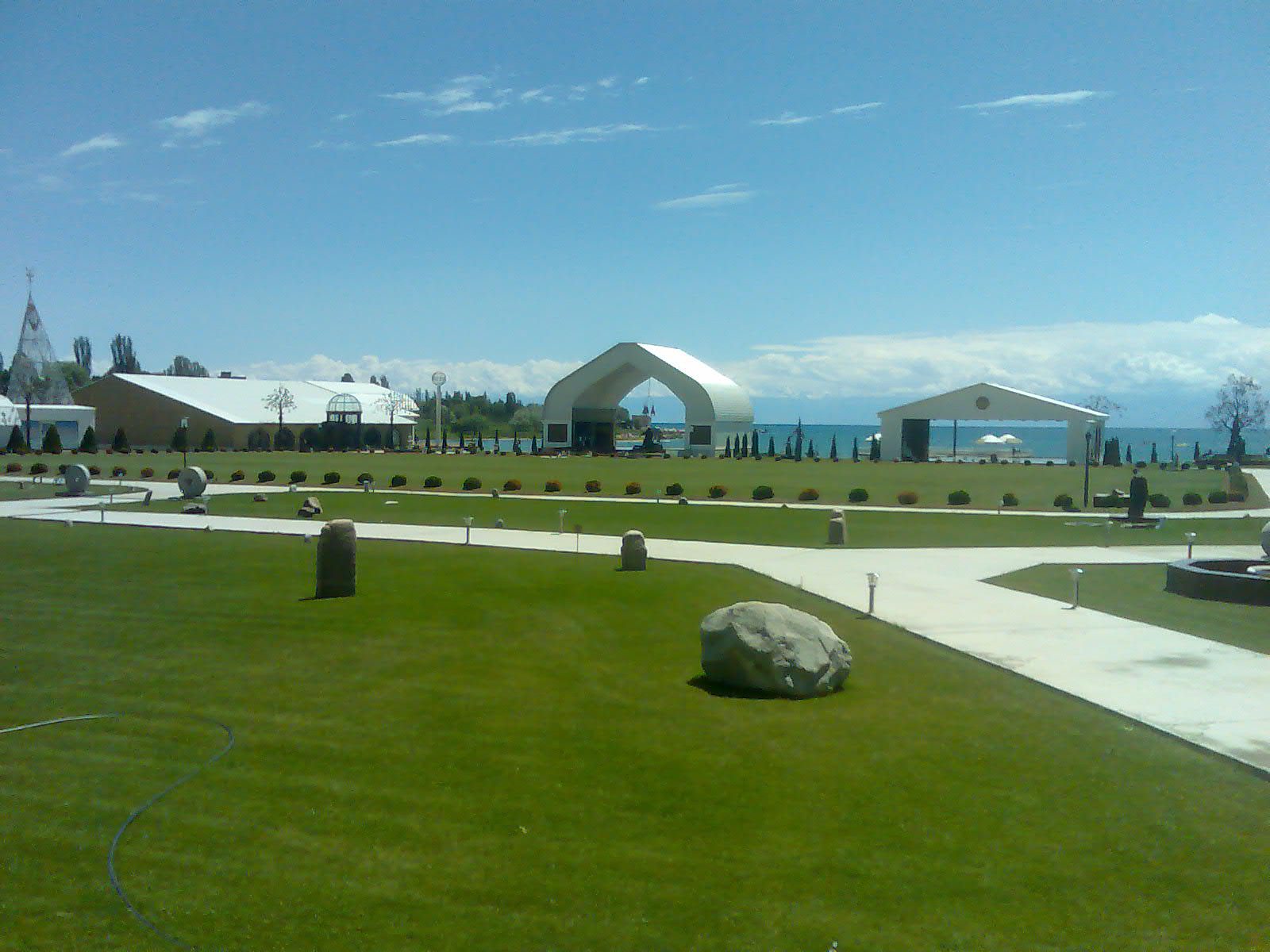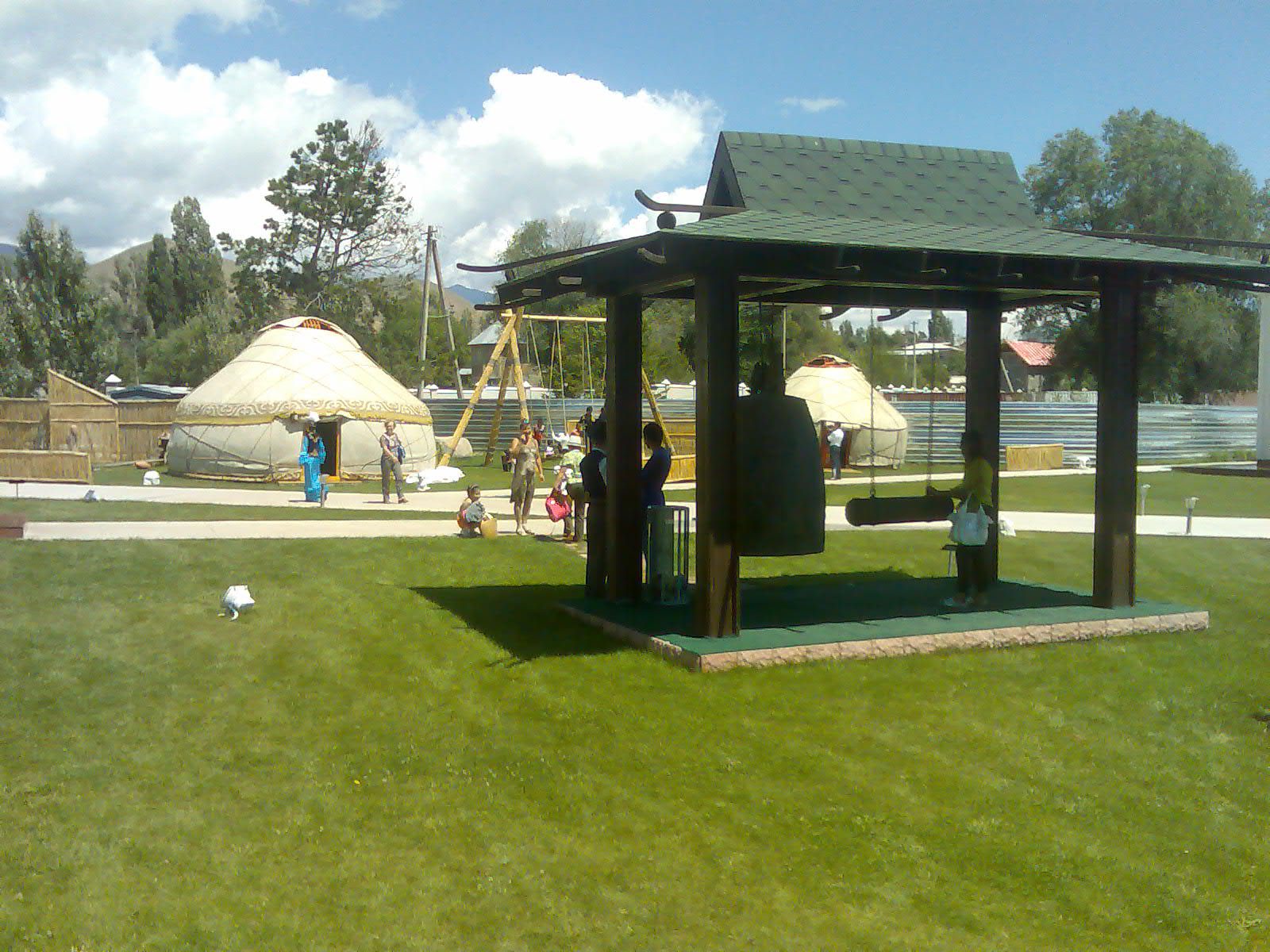Karakol city
Karakol city
Karakol is the administrative center of the Issyk-Kul region, 380 km from Bishkek and about 150 km from the border with China. The city is situated at the foot of the Terskei Ala-Too mountain range and close to the eastern end of Issyk-Kul lake. It is a place not only with picturesque landscapes but also with a unique historic past and architectural landmarks.
Here, you can find two remarkable wooden structures from the 19th century — the Orthodox Church and the Dungan Mosque. The main attraction of Karakol, however, is the memorial and museum complex of N. M. Przhevalsky, a Russian officer, geographer, and explorer of Central Asia.

The Dungan Mosque
The Dungan Mosque in Karakol is a unique architectural structure built from 1907 to 1910 without a single nail. The mosque is an example of traditional Chinese architecture that was built by the Dungans, a Muslim community of Chinese origin, who fled violence and settled in Kyrgyzstan in the late 19th century. The mosque stands out on its own with its history, prominent colours and design, and is one of the major tourist attractions in Karakol.
The mosque interior is adorned in oriental motifs and style that are designed to create an atmosphere of tranquility and harmony. The building is well-preserved and it is not only a place of worship, but also an important historical and cultural landmark of Karakol.

The Holy Trinity Orthodox Church
The Holy Trinity Orthodox Church in Karakol is one of the most famous and oldest churches in Kyrgyzstan. Its architecture is a striking example of Russian wooden architecture from the 19th century. The church features a style typical of that era, with elements of classicism and Orthodox tradition. The domes and crosses on the church are made of metal and covered with gold leaf, giving it a majestic appearance. The interior of the church is adorned with icons and frescoes, reflecting Orthodox spirituality. Despite its simplicity and modesty, the Holy Trinity Church is an important symbol of Christianity in Karakol. It also stands as a monument to history and culture, having been preserved to the present day and attracting both believers and tourists.
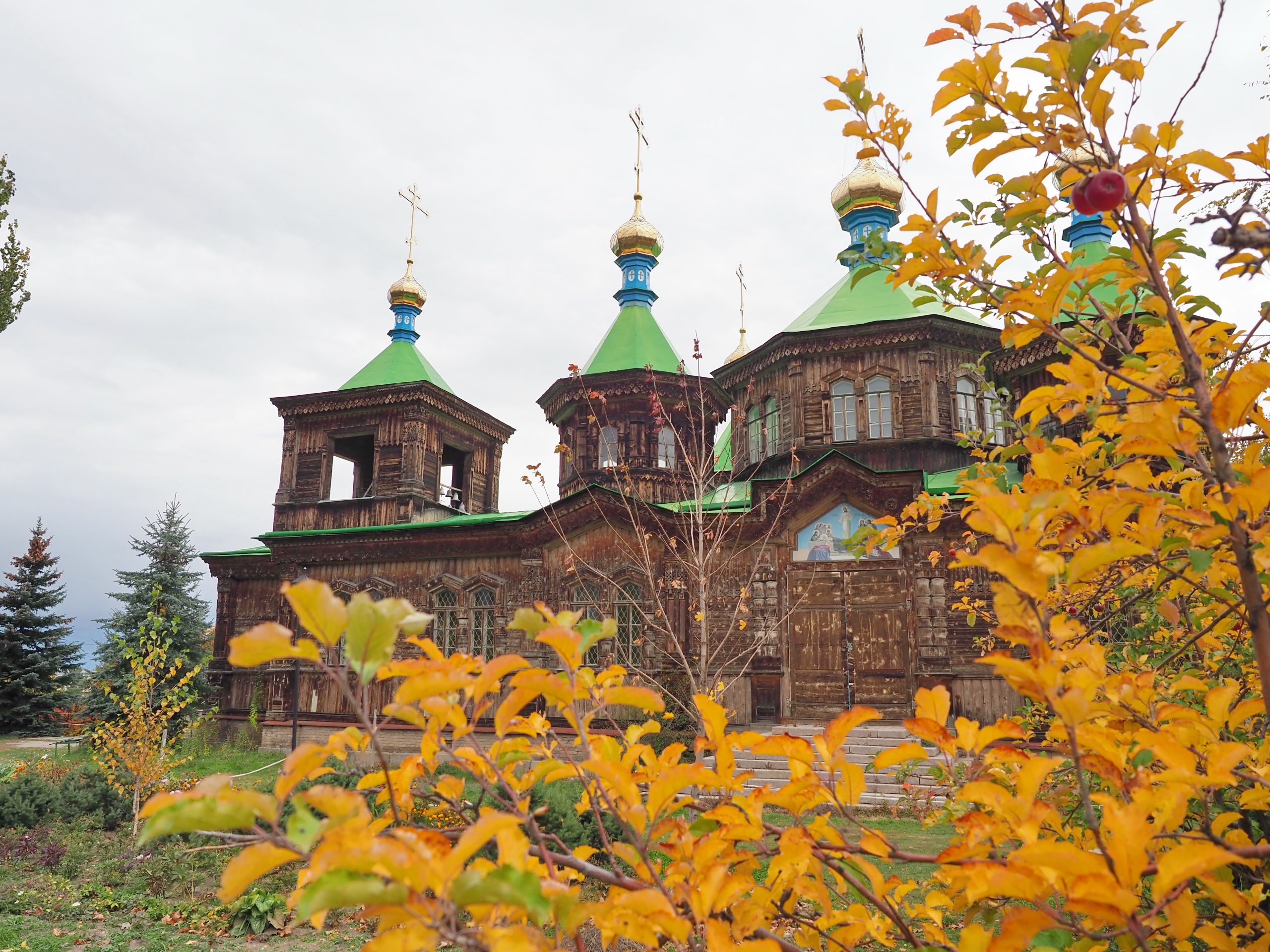
Cholpon-Ata city
Cholpon-Ata citty
Cholpon-Ata is located on the northern shores of Lake Issyk-Kul, known for its natural beauty and resort atmosphere. It is an important tourist center where active recreation, culture, and traditions come together. During the summer months the city is filled with tourists who come to enjoy the suntanning under the hot sun, swim in refreshing waters of the lake and walk on its sandy beaches. Cholpon-Ata is famous for its museums, mineral springs, and resorts, attracting visitors who wish to improve their health and to relax. There are also many historical and cultural landmarks in the city. One of the most famous sites to visit is an area where ancient drawings were carved on stones, known as petroglyphs, that are thousands years old and signs of the ancient traditions and culture of the people who once inhabited the area.
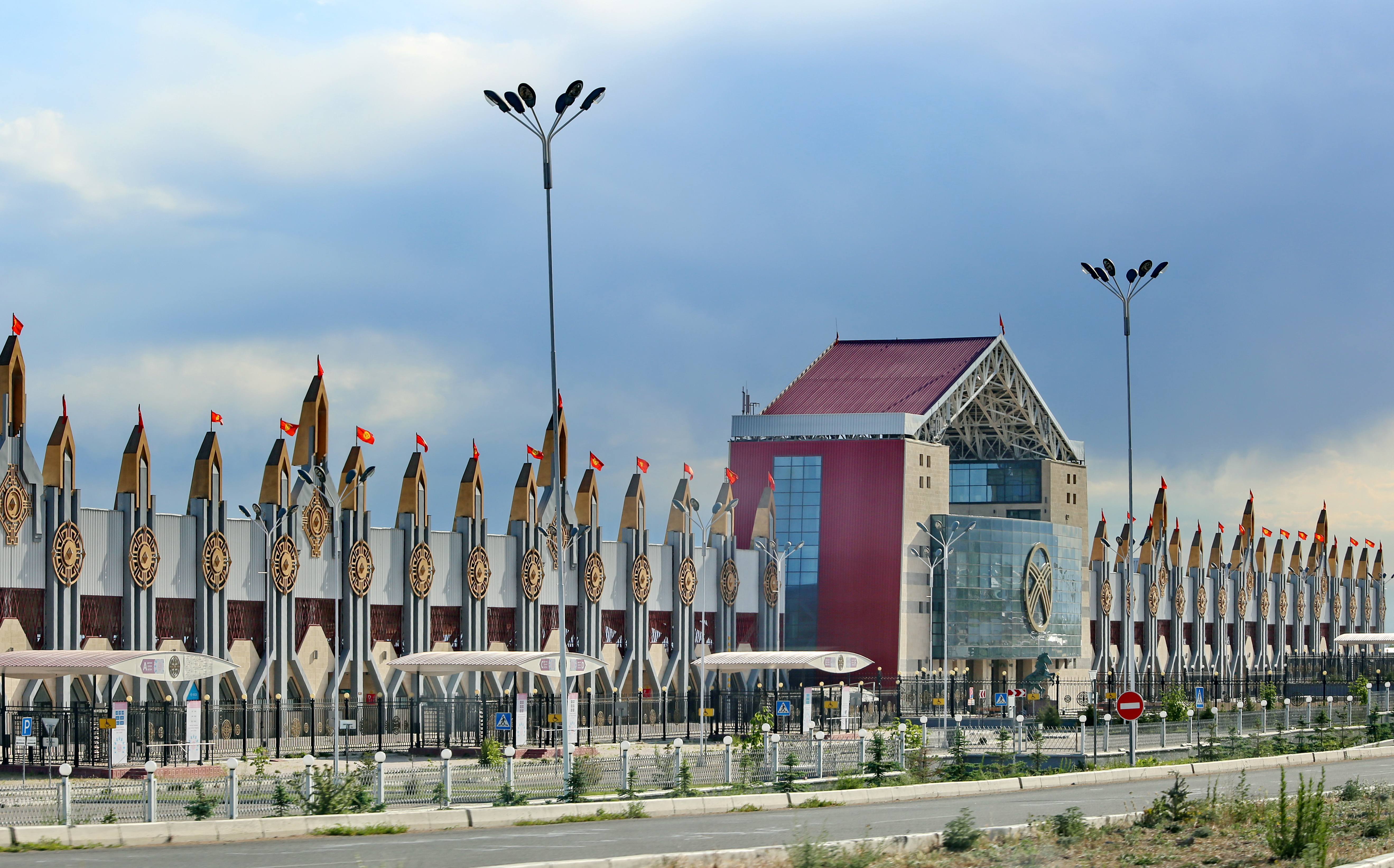
The Petroglyph Museum in Cholpon-Ata
The Petroglyph Museum in Cholpon-Ata is a unique place where you can immerse yourself in the distant past and where you can see traces of ancient cultures. The drawings, depicting various scenes from daily life and beliefs of people, date back from 2000 BC to the 7th century AD. The rock carvings, once brightly painted, stood out and served as an important element of communication, rituals, or historical storytelling.
The petroglyphs have darkened with time, and although their colors are no longer as vivid today, they remain incredibly valuable to archaeologists and historians. Despite the centuries-old significance of the images, scholars avoid restoring them, fearing the risk of damaging or losing these important historical artifacts. This place attracts tourists and researchers from around the world and those who are interested in ancient civilizations and art that has been preserved over millennia.
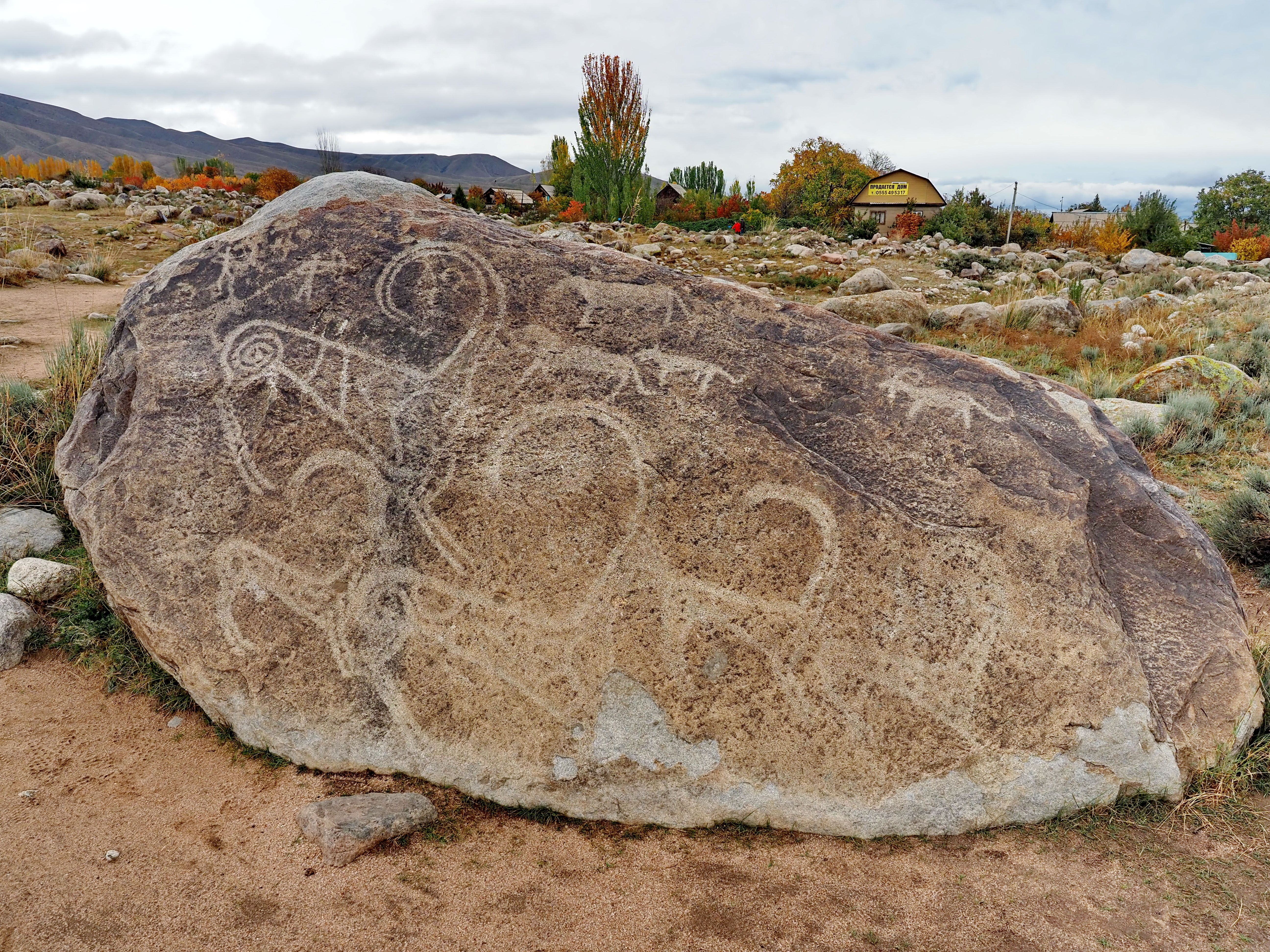

Balykchi city
Balykchi city
Balykchi is a city located on the western shore of Issyk-Kul Lake. It was formerly known as Rybachye and was founded as a transit spot on the Great Silk Road. In the late 19th century the settlement began to actively develop due to fishing and transportation of timber. In 1954 Balykchi was granted the city status and became an important transportation and industrial center, with rail and water routes connecting the region with China and other parts of Kyrgyzstan.
Today, Balykchi is a transit city through which roads to Karakol and Naryn pass. Despite the loss of industrial significance after the collapse of the Soviet Union, it continues to develop light industry and agriculture. Balykchi is also known for its historical landmarks, such as an ancient Kyrgyz cemetery and unique rock paintings in the surrounding areas.

Osh city
Osh city
Osh is the second-largest city in Kyrgyzstan, located on the Ak-Buura River at the eastern edge of the Fergana Valley, near the border with Uzbekistan. The city has a rich history spanning nearly 3,000 years and is one of the oldest settlements in Central Asia. Osh was an important trading hub on the Great Silk Road and continues to be a major market in the region.
The city is known for its main landmark, Suleiman-Too Mountain, which is considered as a sacred and an important pilgrimage site. Osh also boasts cultural and historical monuments that have been preserved despite the changes over time.
Today, Osh is a significant economic and administrative center with a population of around 320,000 people. The city is served by an international airport that connects it to several cities in Russia, Kazakhstan, and other countries.
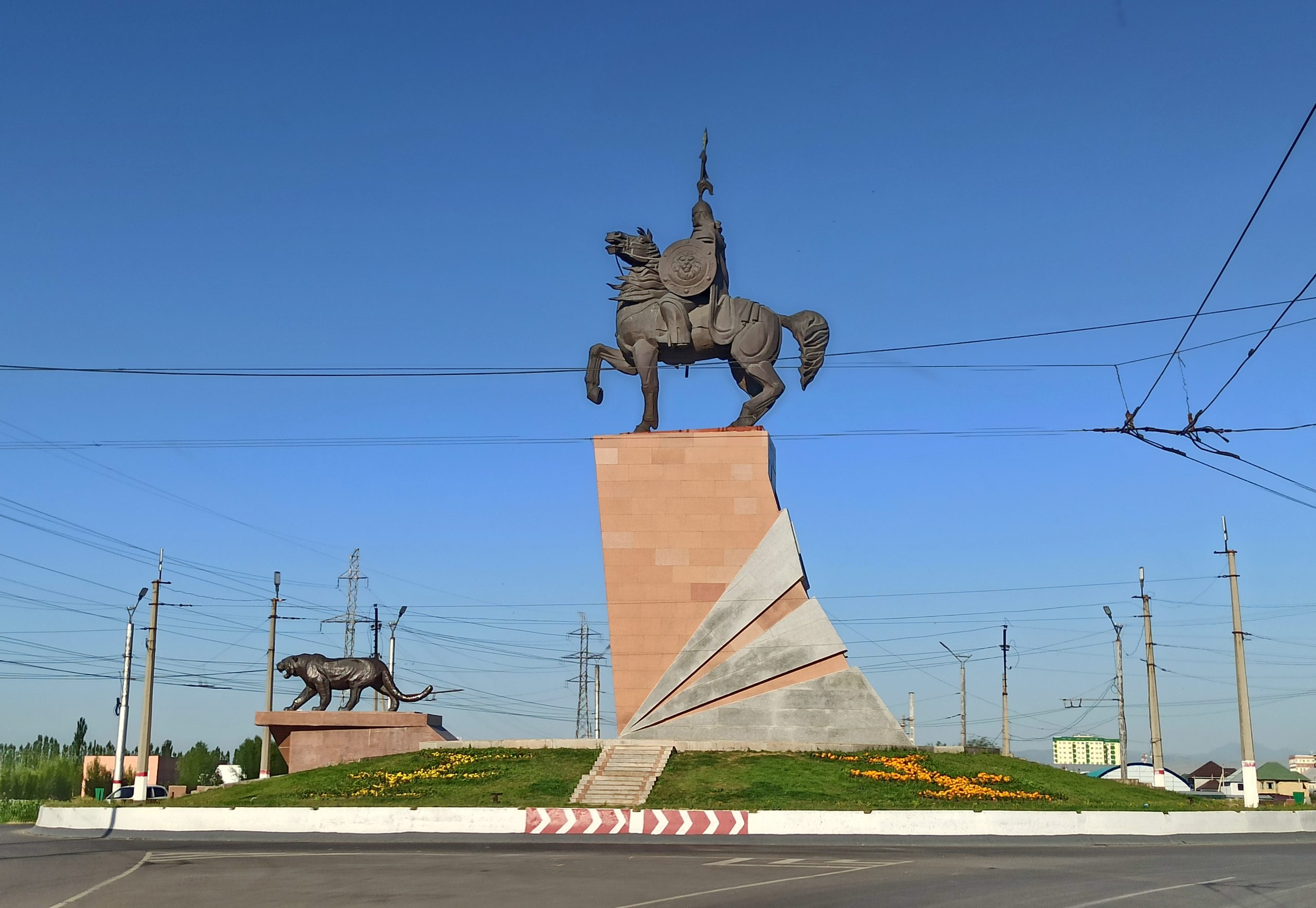
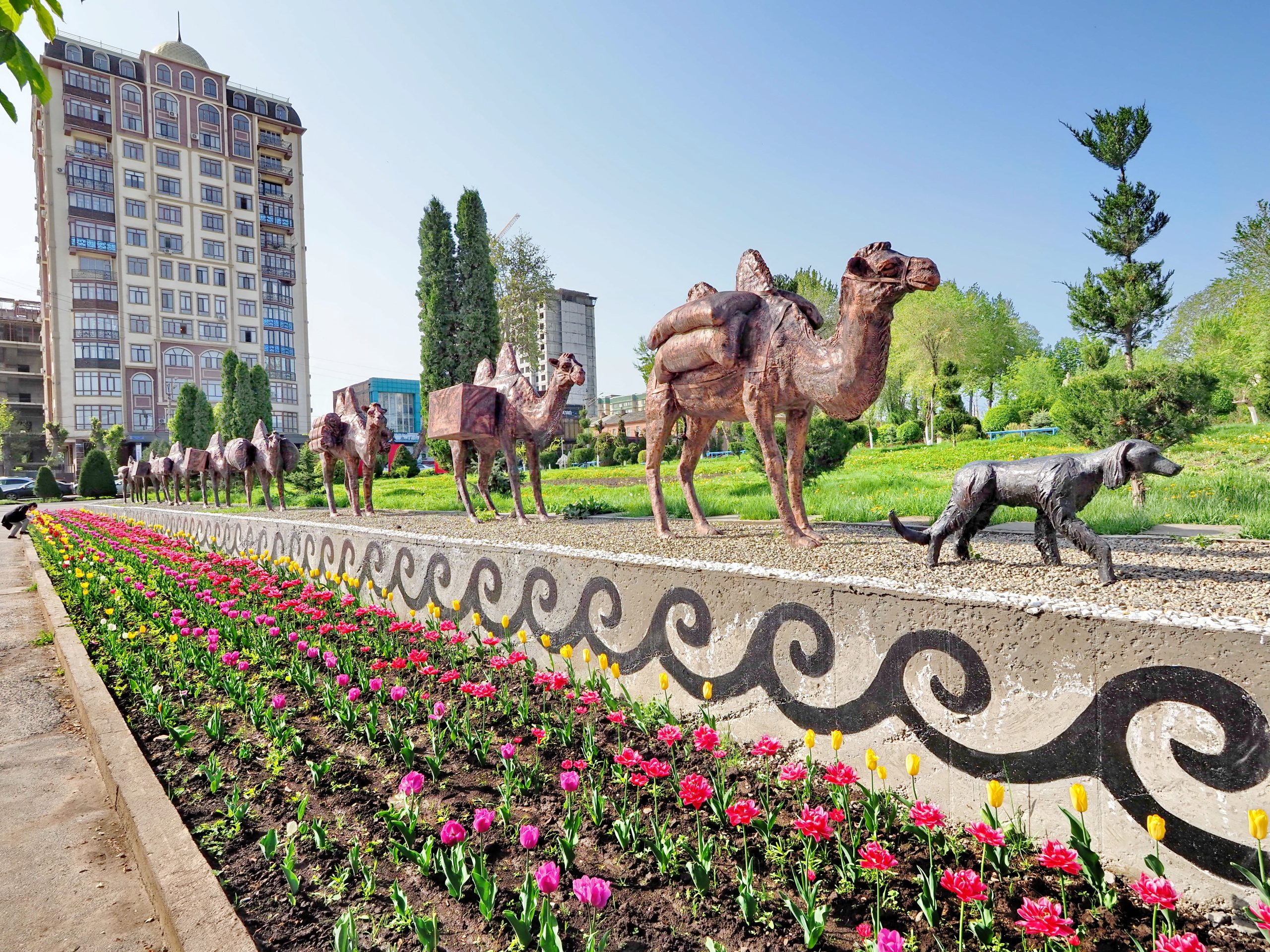
Jalal-Abad city
Jalal-Abad city
Jalal-Abad is a picturesque city located in the southwest of Kyrgyzstan, surrounded by the majestic Tian Shan mountains and lush green valleys. “Abad” is translated from Persian as “settlement,” or “place, where people live.” “Jalal” is translated from Urdu, Persian and Arabic as “grace, shrine, glory.” Therefore, the name of the city could mean “place of glory” or “sacred place.” Most likely, because the city was founded by the pilgrims from Fergana Valley, the name is linked to the Muslim shrine on top of the mountain. The city is immersed in gardens, vineyards, and orchards that make it especially attractive in the warmer season. Here, amidst the green expanses, traditional buildings blend beautifully with modern structures, while markets offer an abundance of local products of fresh fruits, vegetables, spices, and handcrafts. Every corner of Jalal-Abad is filled with life and an oriental flavor is present everywhere. Surrounded by high mountains, the city enjoys a unique climate that attracts both tourists and those who seek a peaceful retreat to improve their health due to its proximity to natural springs and health resorts known for their healing waters. Jalal-Abad is a unique and welcoming city full of natural wonders and hospitality of its people with their own culture, traditions that are worth exploring and a variety of breads and oriental dishes that are worth tasting.
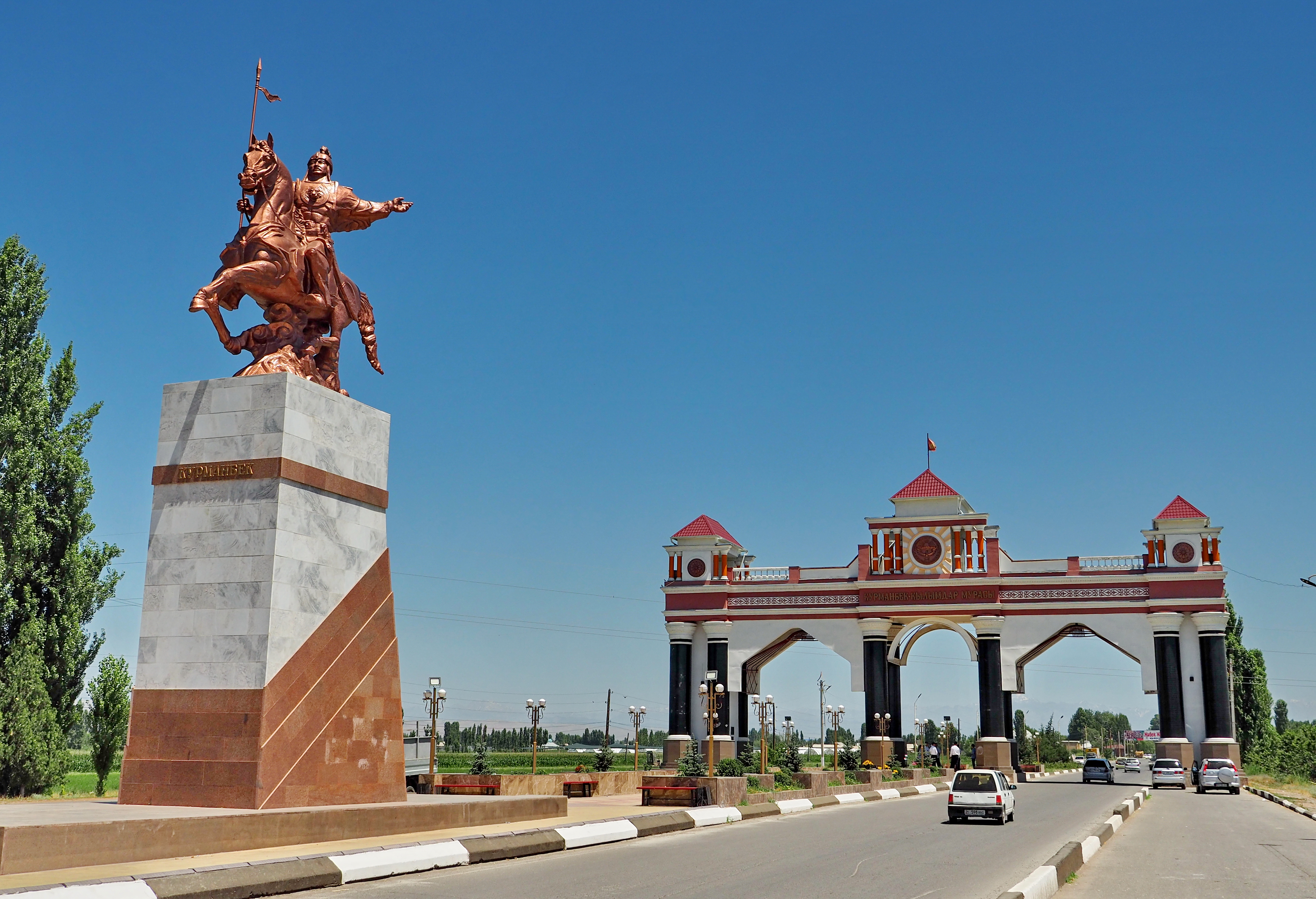
Naryn city
Naryn city
The city of Naryn is known as a very picturesque place where the longest river in the country, the Naryn River, flows through it, surrounded by majestic mountains.
Naryn is the cultural and administrative center of the Naryn region, where you can find a local history museum, a musical drama theater, the State University, and several cozy hotels. The city also serves as the starting point for many tourist routes (both horseback and hiking), as Naryn and the surrounding area boast an incredible potential for tourism.
Here, you can experience everything that nature has to offer: picturesque gorges and passes, raging mountain rivers, beautiful waterfalls, magnificent lakes, and glaciers. And, of course, the ancient and unique culture of the nomadic people. All of this makes the Naryn region an alluring attraction for travelers and leaves no one indifferent!
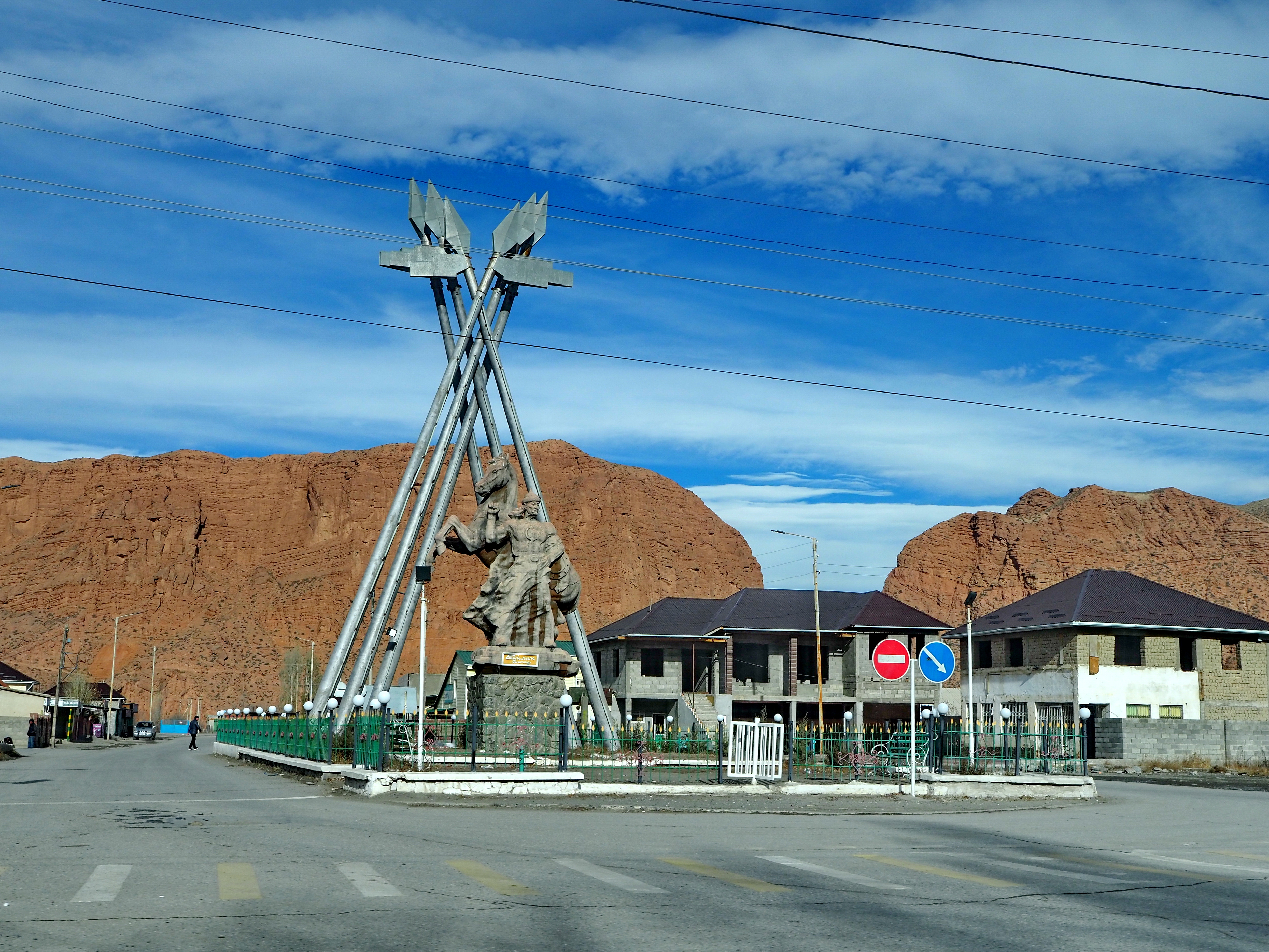
Ak-Sai Valley
The Ak-Sai Valley
The Ak-Sai Valley, located in the Naryn region on the border with China, is a place where the grandeur of the mountains meets the stunning beauty of nature. Majestic snow-capped peaks of the Tian Shan, covered in ancient glaciers, rise above the valley, creating an incredible contrast with the green expanses dotted with blooming grasses and rare plants. It is as if time comes to a stop here and you find yourself in a world where the harmony of nature is felt in every detail. In spring the valley is filled with a fresh scent of wild flowers and grasses, while in summer – with lightness in the air and hot sun. Many rivers flowing down from the mountain peaks create cascades of waterfalls that reflect the sky in a million tiny mirrors. Few people venture into this corner of the earth, therefore, the pristine beauty is preserved in its primeval purity. The Ak-Sai Valley is not just a visual delight but also a sanctuary for the soul. Here, far from civilization, you can escape from the noise of the world, be as one with nature, and enjoy its silence.
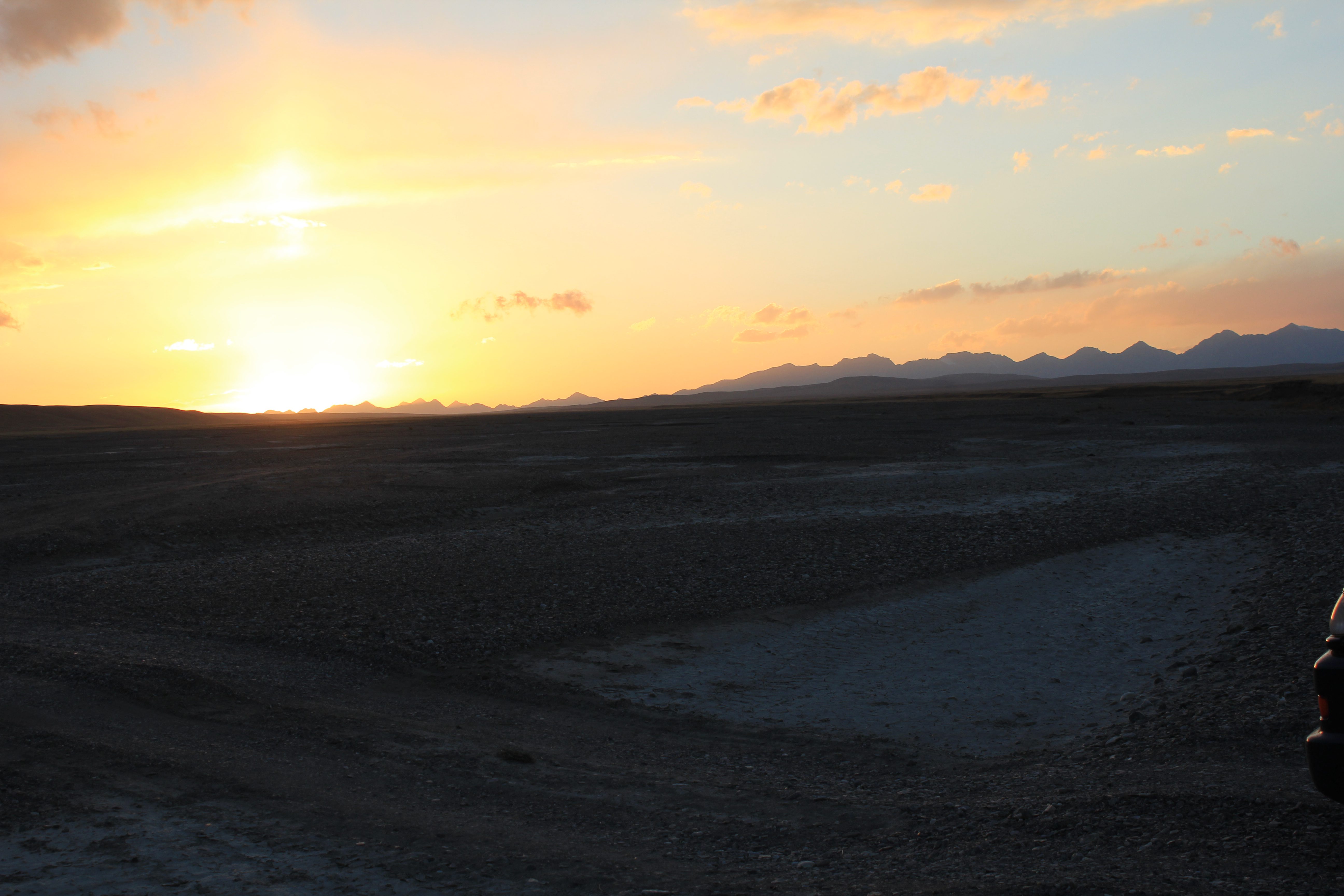
The Ak-Sai Canyons
The Ak-Sai Canyons are located in the Issyk-Kul region of Kyrgyzstan. This is a unique natural formation, shaped by rock erosion, with narrow and deep canyons of bright varied colors due to the multiple layers of rock lifted from the depths of Earth. In this area visitors can enjoy breathtaking views, including the steep canyon walls and the Ak-Sai River that flows on the canyon floor. The site is popular among tourists and mountain climbers, thanks to its scenic beauty and opportunities for outdoor activities.

Sary-Jaz Valley
Sary-Jaz Valley
Located amidst the mountain ranges of the Terskey Ala-Too, the Sary-Jaz River flows for many kilometers through a canyon-like valley surrounded by steep cliffs. From here opens up a grand view of mountains with their jagged ridges and sharp peaks that stretch across the horizon, encircled by a powerful strip of snow and sparkling glaciers. In the valley lies the stunningly beautiful Sary-Jaz Canyon, located near the confluence of the Sary-Jaz River and the right tributary of Ak-Shiyrak. Also in this area is the Ak-Chunkur cave, where traces of ancient human presence have been discovered. The Sary-Jaz Valley will be of interest to both regular tourists and those who are passionate about geology and archaeology.
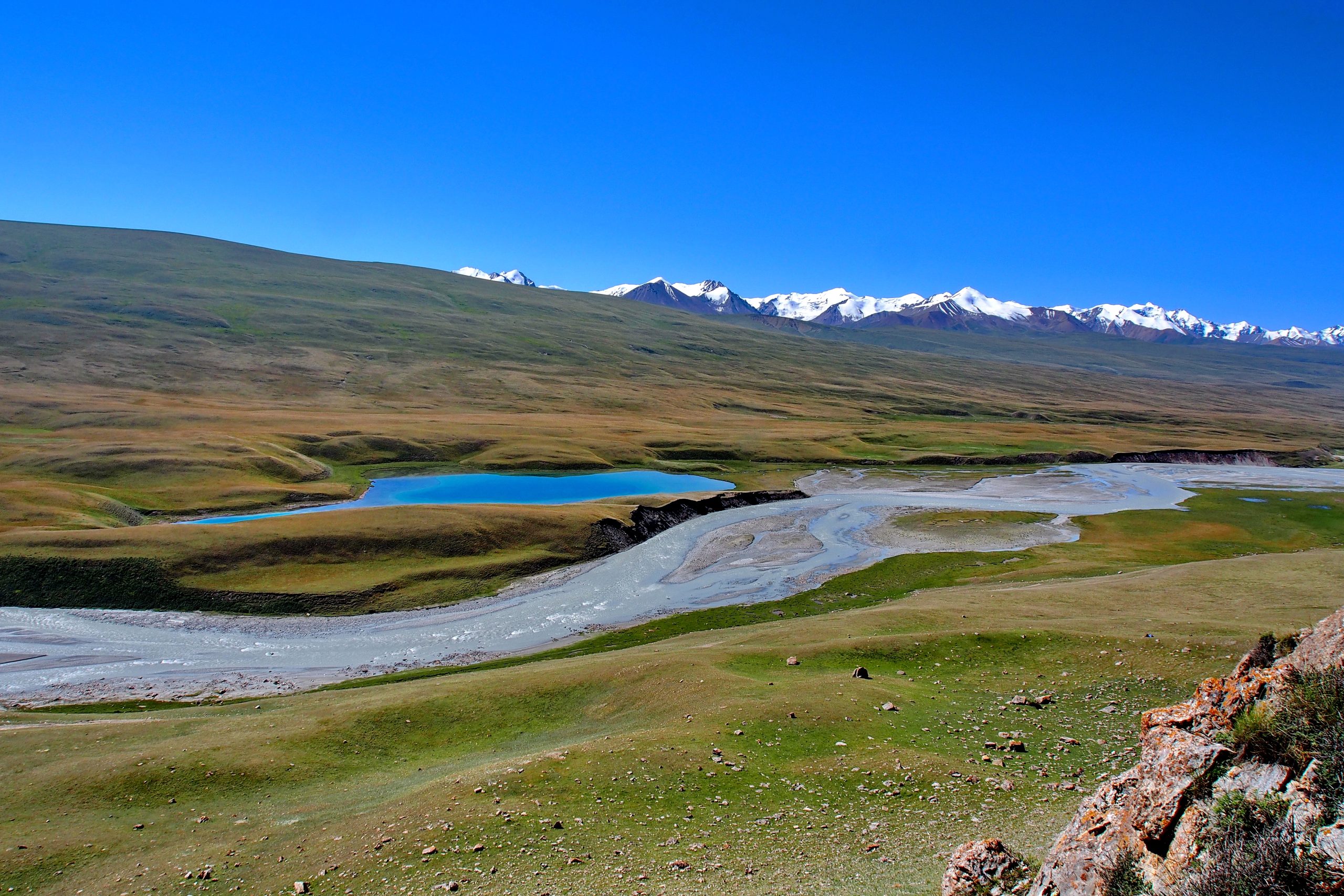
Lake Issyk-Kul
Lake "Issyk-Kul"
The “living” wonder of the Tien Shan is celebrated in songs and poems and is rightly called “The Blue pearl” of Kyrgyzstan. The lake is famous for its beauty and crystal-clear waters.
The lake shores stretch for many kilometers, dotted with sandy beaches. Behind them lies a wide belt of fertile plantations, and beyond, the mountain peaks rise… Deep, picturesque gorges lead to the high altitude pastures (jailoos) covered by the colorful carpet of alpine meadows, and this is where many mineral springs emerge from the underground. Towering above the “blue pearl” are the rocky giants crowned with the shimmering helmets of eternal snow and ice. All this vibrant beauty is reflected in the turquoise waters of Issyk-Kul.
Many tourists come here every year to relax on the warm beaches and rejuvenate at one of the numerous resorts located by the mineral springs. However, not everyone knows that Issyk-Kul is not only about beaches, boarding houses, and suntanning. Since time immemorial, this place has been sacred to generations of peoples living along the shores of this magnificent lake. Ancient states rose and fell here, many beautiful cities were built and later turned into ruins, merchants hid their treasures, and marauding bandits robbed passing caravans.
In the middle of the second millennium AD, the Great Silk Road passed through the area, connecting China and Europe.
The waters of Issyk-Kul hold countless testimonies of those times, many of which still remain hidden from view, far from the usual tourist routes.

Lake Son-Kul
Lake Son-Kul
Son-Kul is a high-altitude lake of the Tien Shan, located at an altitude of 3,016 meters above sea level. It is fed by several small mountain rivers and only one river, also called Son-Kul, flows out and joins the turbulent Naryn River.
The lake lies in a mountain plain, surrounded by meadows (called jayloo), that have been used as pastures for livestock since ancient times as it is evidenced by petroglyphs found along the shores of the lake.
It is perhaps the most atmospheric high-mountain pasture in the Tian Shan and it can also be considered as an ancient place of strength and tradition for the local Kyrgyz people.
Life at Son-Kul to this day retains many subtle aspects that are inaccessible to the civilized world.
Here, you have the opportunity to get acquainted with the way of life of nomadic herders and enjoy nature in its purest primordial form.

Issyk-Kul and Son-Kul
Issyk-Kul and Son-Kul
Issyk-Kul is one of the second largest alpine lakes in the world that captivates with its boundless blueness and beauty. Surrounded by magnificent mountain ranges, it resembles a giant mirror that reflects the sky and snow-capped peaks. Lake water is slightly saline and clear with a gentle breeze that brings freshness and tranquility. Issyk-Kul is especially beautiful at dawn and sunset when its surface plays with different shades of blue and gold. The lake’s shores, with its sandy beaches and cozy coves, creates an atmosphere of a true paradise for rest and recreation, thus attracting both travelers and locals.
Son-Kul, on the other hand, is a high-altitude lake (over 3000 meters above sea level) that is well hidden among the majestic mountain peaks and green valleys where herds of horses and sheep graze in summer. The lake, accessible only by foot or horseback, feels like a living oasis in the heart of restless alpine meadows. The water in Son-Kul is clear and cold, the air is fresh and pure, filled with the scent of mountain plants. Here, amidst endless horizons, one can find the roots of Kyrgyz nomadic lifestyle that has lived in harmony with nature for centuries.
Both of these pearls of Kyrgyzstan, Issyk-Kul and Son-Kul, seem to be places where time slows down, and nature reveals its purest and most inspiring moments. These corners of the world leave a lasting mark on the soul of everyone who visits.


Lake "Ala-Kul"
Lake "Ala-Kul"
A high altitude lake Ala-Kul is a true natural wonder, named for a remarkable color of its waters (in Kyrgyz, “ala” means “multicolored” and “kul” means “lake”). It has an incredible turquoise hue that contributes to a mesmerizing landscape, especially against the backdrop of the snow-capped mountain peaks and the surrounding lush alpine meadows. Getting there is difficult because the path lies through high mountain passes and rocky areas, which makes Ala-Kul a popular destination for experienced tourists and climbers. The lake is surrounded by steep snow-covered slopes that keep the area peaceful and tranquil. The remote destination of the lake attracts adventure enthusiasts, and it also inspires contemplation and meditation due to its untouched and pristine nature. Despite its beauty, the water in the lake is very cold so it takes great determination to swim in it. Ala-Kul is not just a natural marvel, but also a cultural symbol for the local people.
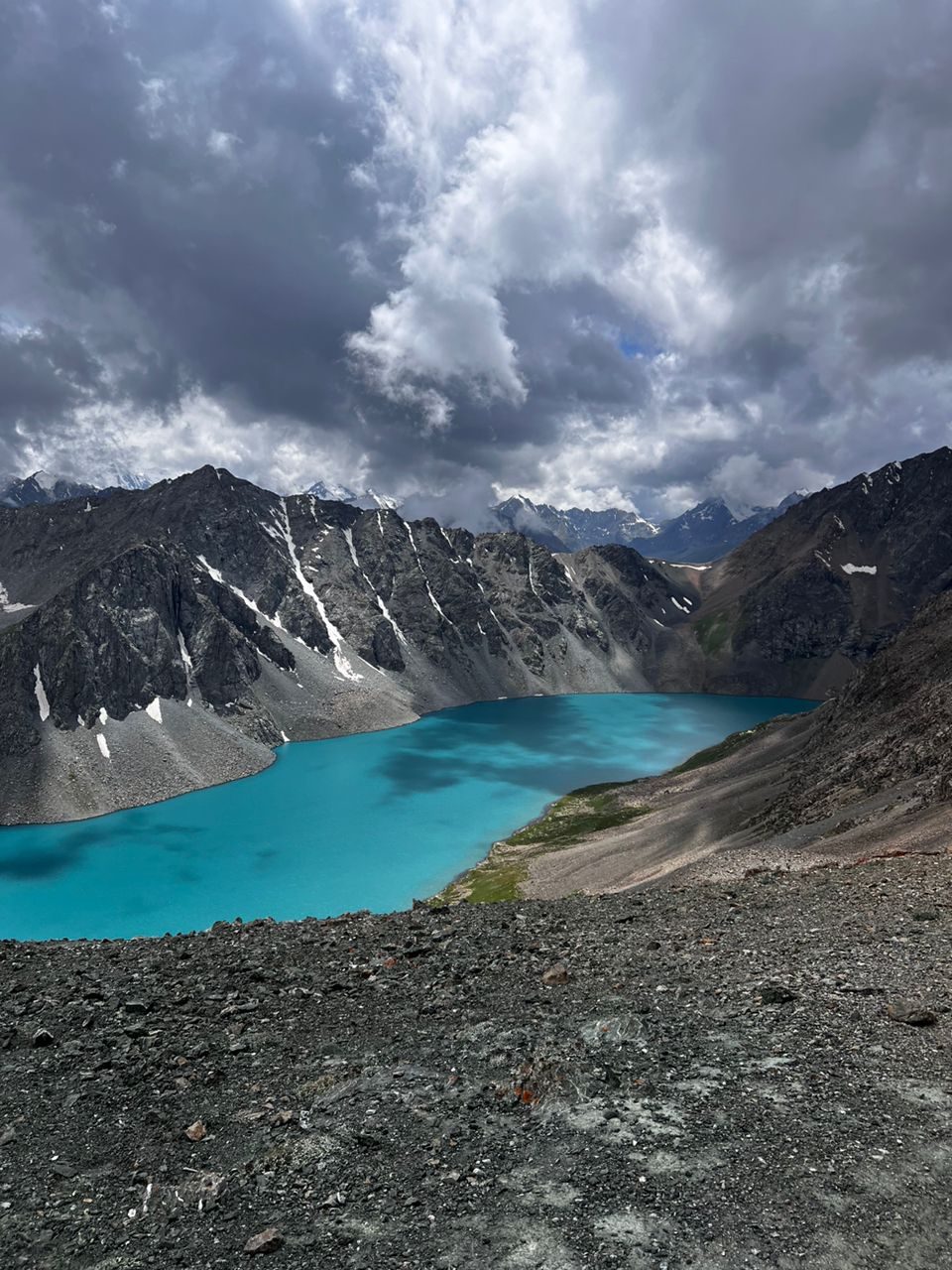
Lake "Kööl-Ukök"
Lake Kööl-Ukök
Lake Kööl-Ukök, located in the picturesque region of Naryn, is one of the most mysterious and beautiful places that can be added to the realm of high-altitude landscapes of Kyrgyzstan. Situated at an altitude of about 3,000 meters above sea level, it shines like a precious emerald surrounded by the majestic Tien Shan mountains, reflecting snow-capped peaks in its crystal-clear waters.
The water in Kööl-Ukök has an incredible turquoise hue, and its surface mirrors the clouds, mountains, and endless sky like in a perfectly painted picture. A gentle breeze touches the surface of the lake, creating barely noticeable ripples and adding movement and life to the scene.
This corner of nature seems to slip away from human sight, remaining hidden among the mountain ranges, which is why it retains its pristine beauty. The path to the lake is winding and full of surprises. It is a place that leaves unforgettable impressions and makes you believe in the wonders of nature, preserving its secrets and beauty for those ready to see them.
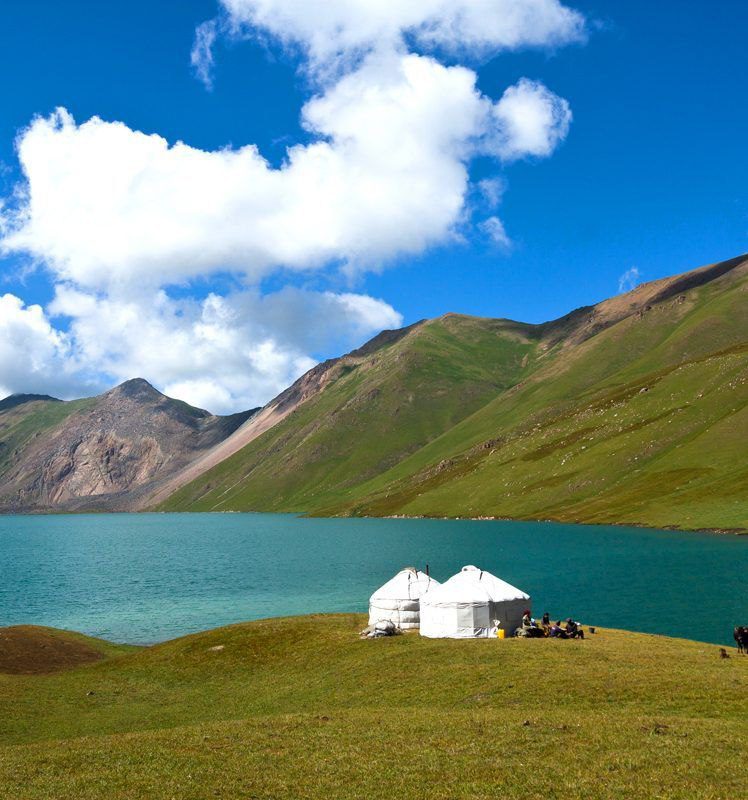
Lake "Kel-Suu"
Lake "Kel-Suu"
Lake Kel-Suu is a high-altitude glacial lake in Kyrgyzstan, located in the Naryn region, not far from the border with China at an altitude of about 3,500 meters. It is one of the most beautiful and hard-to-reach places in the country, surrounded by steep cliffs and picturesque landscapes. Kel-Suu is famous for its unusual phenomenon: from time to time, it completely disappears when the water drains into underground caves and grottoes, then refills depending on the season and rainfall. This makes the lake entirely unpredictable. Locals joke that tourists should check in advance whether the lake has water before visiting.
To get to Kel-Suu, one must pass through two border posts and obtain a special permit. The road to the lake is challenging and part of the way must be covered on horseback or on foot. Near the lake, there is a yurt camp where visitors can stop for the night and rest.
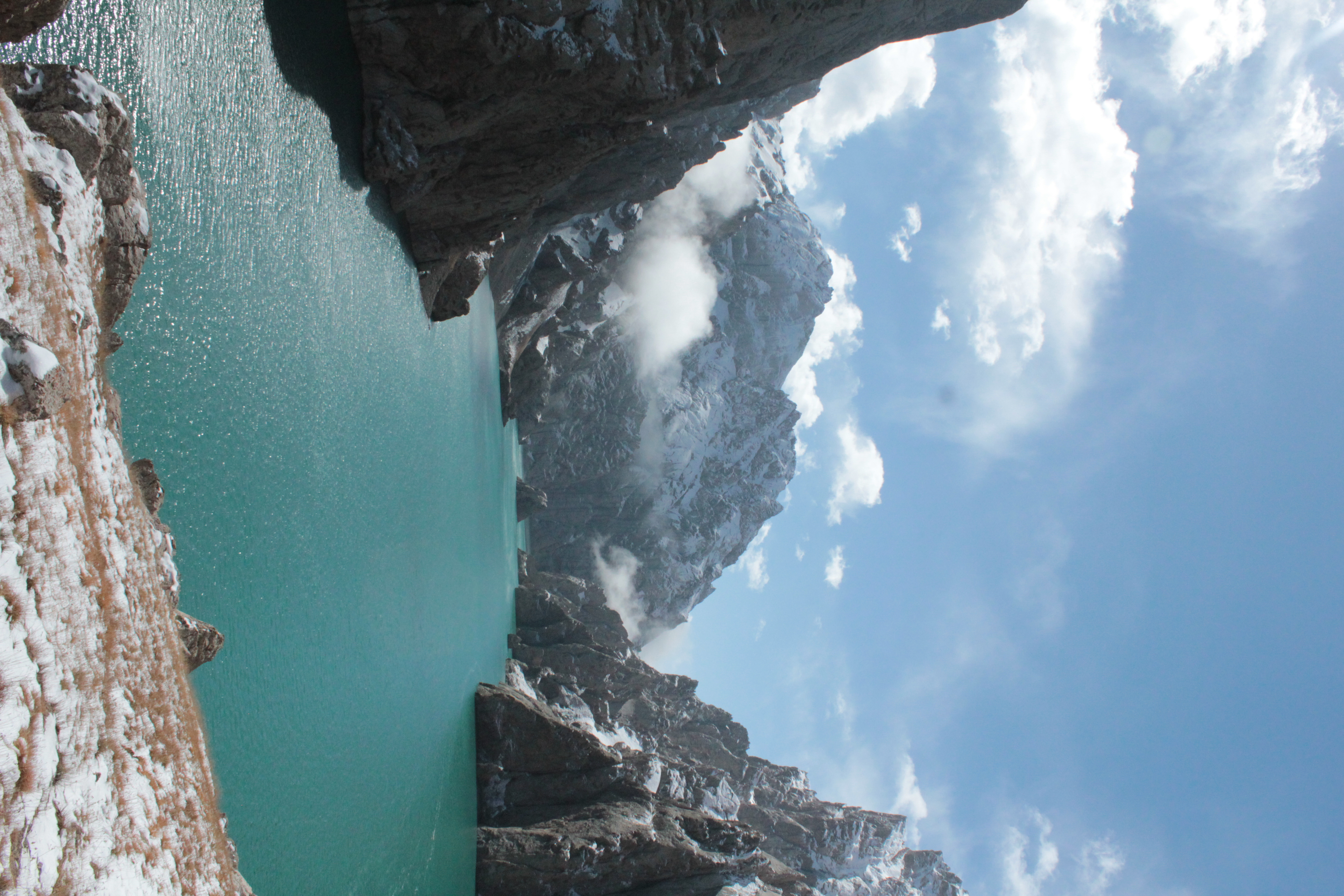
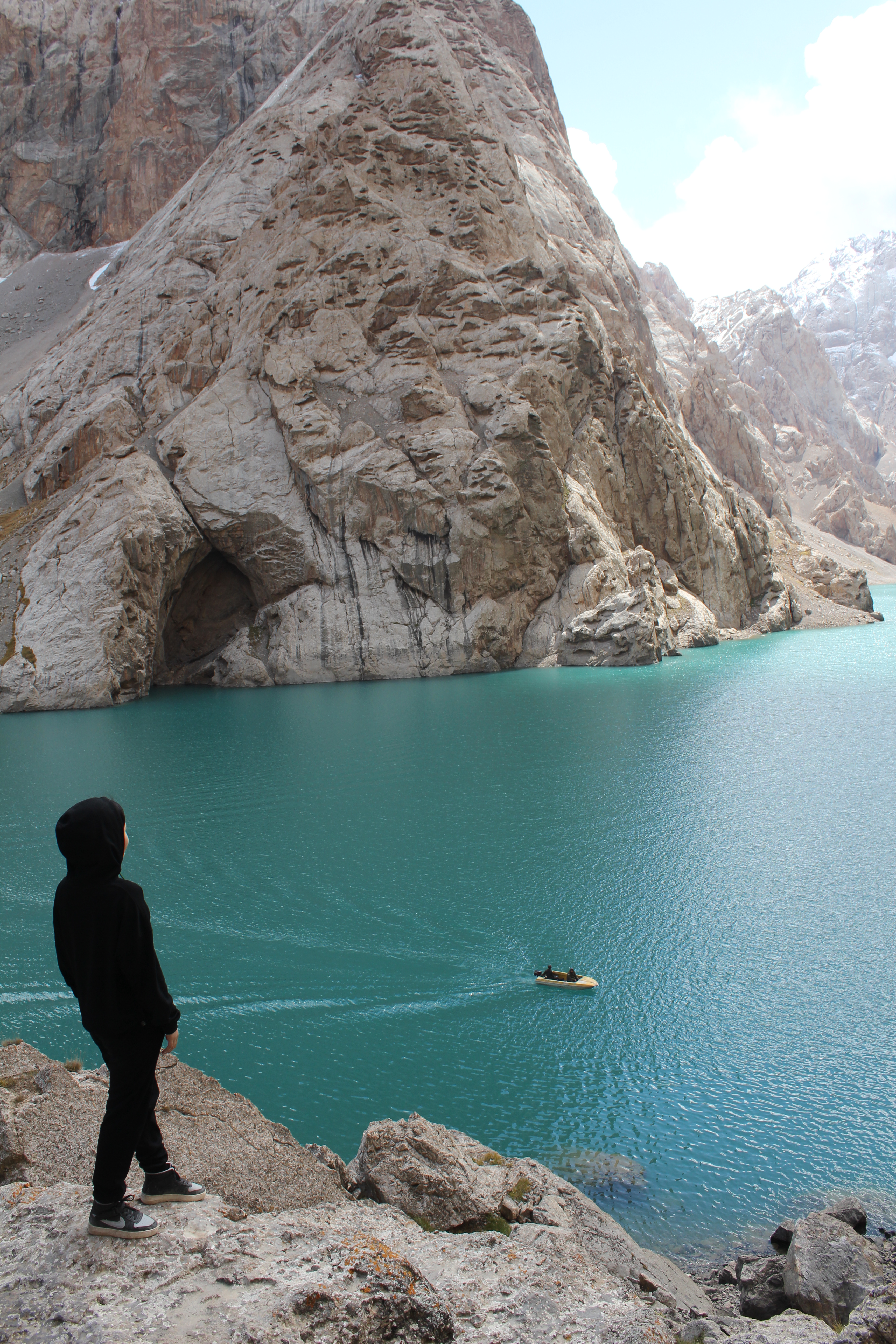
Lake "Sary-Chelek"
Lake "Sary-Chelek"
Lake Sary-Chelek is a small northern part of the Sary-Chelek Nature Reserve, one of the most remarkable places in Kyrgyzstan. To the north, the reserve is bounded by the chains of the Chatkal mountain range, with several peaks rising over 4,000 meters above sea level. The landscapes here are incredibly beautiful and diverse. The foothill steppes, ridges, turbulent rivers, quiet marshes, mountain lakes with colorful cliffs, and flowering valleys all leave an unforgettable impression.
The “heart” of the reserve is a marvelous Sary-Chelek Lake, which formed as a result of the collapse of two mountain ranges. A unique mountain corridor, filled with shimmering azure waters, stretches from the southeast to the northwest for 7 kilometers. The lake is surrounded by a chain of mountain peaks, sparkling with snowy whiteness. The shores of Sary-Chelek are extraordinarily picturesque: steep and plunging into the depth of the lake, which reaches 234 meters. The northern slopes are covered by a vast forest of tall spruces, fir trees, and dense juniper groves.
This truly captivating place is filled with an atmosphere of mystery that always attracts nature enthusiasts.
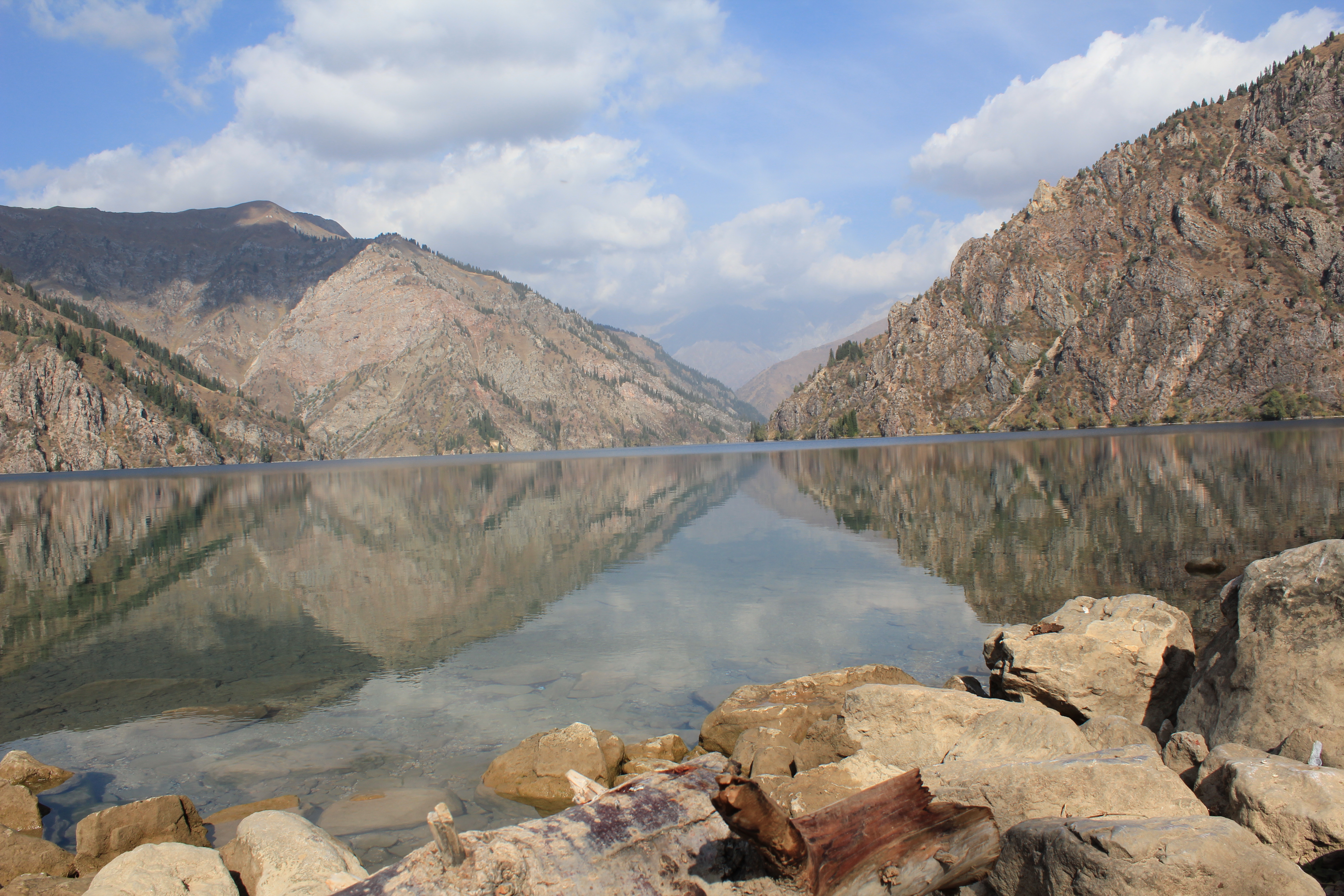
Lake "Chatyr-Köl"
Lake "Chatyr-Köl"
Chatyr-Köl is one of the most picturesque and majestic lakes in Kyrgyzstan, hidden deep in the mountains. Situated at an altitude of over 3,500 meters above sea level, it is surrounded by steep snow peaks that reflect in clear waters of the lake, creating images full of harmony and tranquility.
The water in Chatyr-Köl has a bright blue hue that ranges from deep blue to soft light blue, as if the lake itself holds the sky within it. The smooth surface of the water resembles a mirror, in which you can see not only the majestic mountains, but also the calmness that reigns in this high-altitude corner. A light breeze occasionally disturbs the silence, causing the water’s surface to gently ripple and sparkle in the sunlight with millions of glimmers.
Chatyr-Köl is a place where you can feel the full power of nature. There is no hustle and bustle here, only silence and space, filled with grandeur. Surrounding the lake, green pastures stretch out with flowers blooming in the summer months along with rare grasses and plants, creating a sense of seclusion with nature. Snow-covered mountain peaks, even when the weather is warm, add a special mystique and nobility to this place.
When the sun sets behind the horizon, Chatyr-Köl is bathed in soft golden-pink shades, and everything around becomes even more mysterious and majestic. This is a place where you can lose yourself, find peace, and connect with the timeless beauty of the mountains and nature.

Blue Waterfall
Blue Waterfall
Suspension Bridge is located in the Chunkurchak Gorge, not far from Bishkek. The bridge is part of a tourist route that also includes a visit to the Golubinyi Waterfall. Tourists can stroll through the gorge, enjoying the views of the mountains, the Supara Ethno-complex, and the Chunkurchak ski resort, as well as, walk across the suspension bridge, from which beautiful panoramic views unfold.

The Shar Waterfall
The Shar Waterfall
The Shar Waterfall is a true natural masterpiece, hidden in the mountains of Kyrgyzstan, where water rapidly falls from great heights, creating a mesmerizing spectacle that is impossible to forget. It is like a living embodiment of the power of nature, where every stream of water, cascading over the rocky ledges, carries within itself the energy of the mountains and their centuries-old forests. A powerful roar can be heard as you approach the waterfall, sounding like the sighing and awakening of the earth. The water, falling from a height of over 400 meters, creates a veil of white splashes, sparkling in the sunlight. The crystal-clear drops fall on the rocks and create a mist that envelops the surrounding forest in a light, almost mystical cloud. The air is cool and fresh, filled with the scent of pine trees and earth, giving a complete sense of unity with nature. Thick growth of trees and shrubs around the waterfall is shaped like a green amphitheater where the sound of water sounds like music, amplified by the majestic mountains, hidden in the mist. When the sun shines through the tree canopy, rainbow-colored reflections appear on the water, and the entire waterfall begins to sparkle and shine. The Shar Waterfall is a special place to remember with admiration for its idyllic beauty and magnificence.

The Karakol Gorge
The Karakol Gorge
The Karakol Gorge is one of the most picturesque places near the city of Karakol, located in a scenic valley at the foot of the majestic Tien Shan mountains. This natural enclave attracts with its pristine beauty and tranquility, rapid mountain rivers and streams, lush green expanses and pure mountain air. The intertwining of the mountains and valleys imbues this paradise-like spot with a unique magic. The Karakol Gorge is especially beautiful during summer when nature is in full bloom and it is popular among tourists and local outdoor enthusiasts, offering excellent conditions for hiking, camping, and wildlife observation.
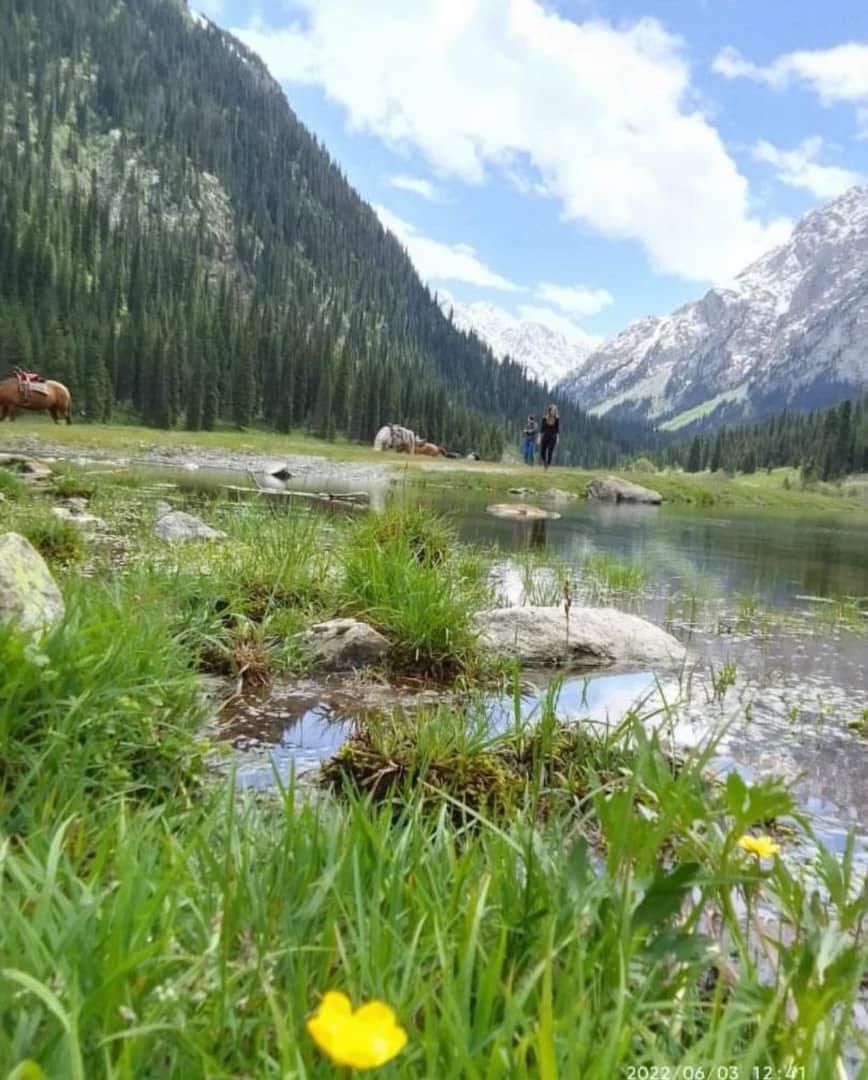
Grigorievsky Gorge
Grigorievsky Gorge
Grigorievsky Gorge is a long and picturesque gorge located on the northern shore of Issyk-Kul near the village of Grigoryevka. The gorge stretches 35 km along the Kungey Ala-Too range. A crystal-clear full-flowing river, Chon-Ak-Suu, flows at the bottom of the gorge. The mountain slopes are covered with vibrant alpine flowers, spreading out as a splendid colorful carpet.
There are three high-altitude lakes in the area. Beyond them woodlands transition into magnificent alpine meadows.
The Grigorievsky Gorge is known not only for its pristine and unique nature but also for seasonal outdoor activities such as hiking, horseback riding, participation in the setup of a yurt, and much more.
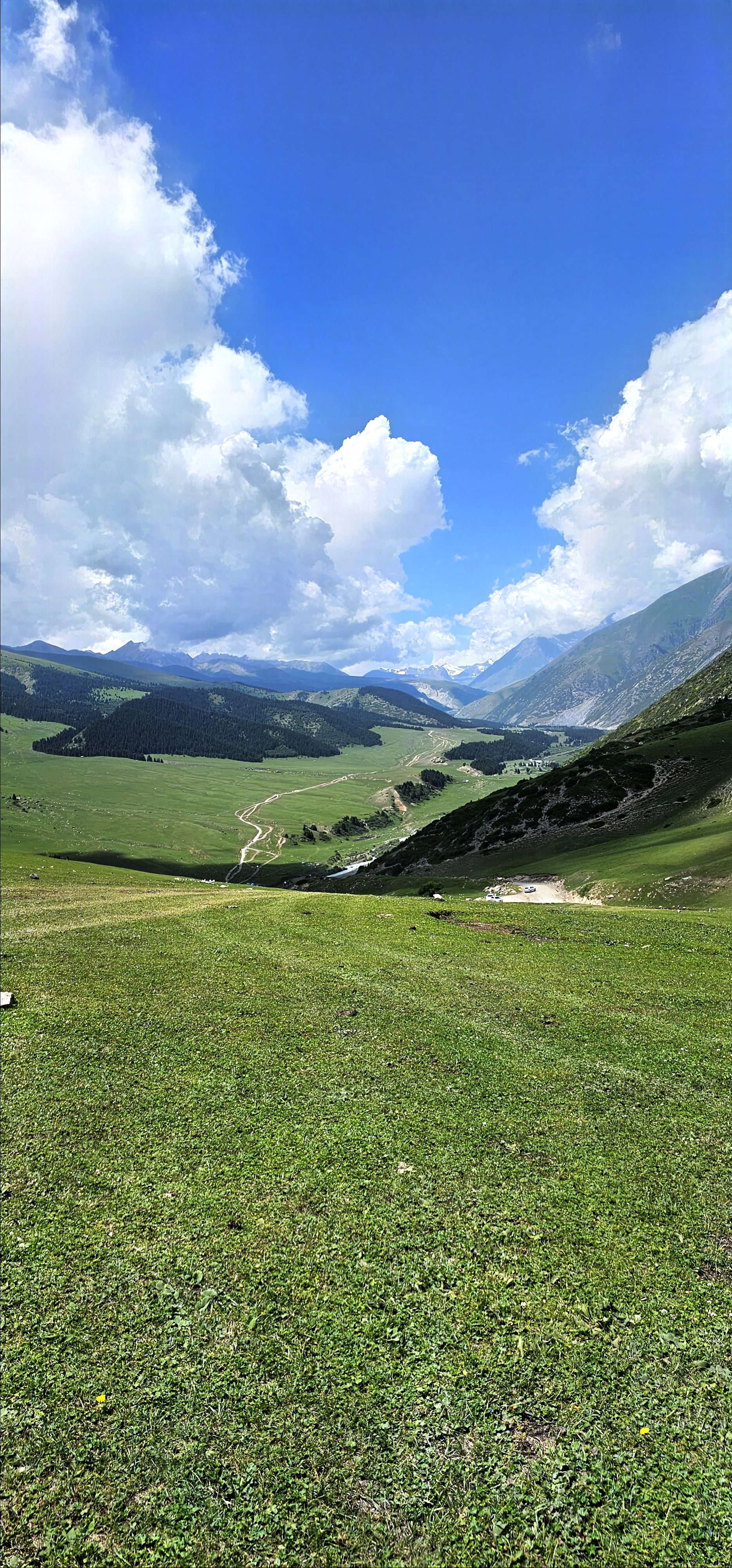
Barskoon Gorge
Barskoon Gorge
Barskoon Gorge is one of the most beautiful gorges on the southern shore of Issyk-Kul and is famous for its two high waterfalls – “Leopard’s Tears” and “Champagne Splashes.” The most popular, of course, is the “Leopard’s Tears” waterfall where the “tears” fall in a grandiose cascade from a height of 100 meters.
The gorge itself is covered in thick forest. Aspiring upwards Tien Shan spruce trees mixed with shrubs of rowan, barberry, raspberry, currant, honeysuckle, and sea buckthorn are set against the blue sky and snow-capped mountain peaks, creating a stunningly beautiful scenery.
Among the cultural attractions of Barskoon is worth noting the ancient headquarters of Tagay-Bii, who was one of the founders of Kyrgyz nationhood.
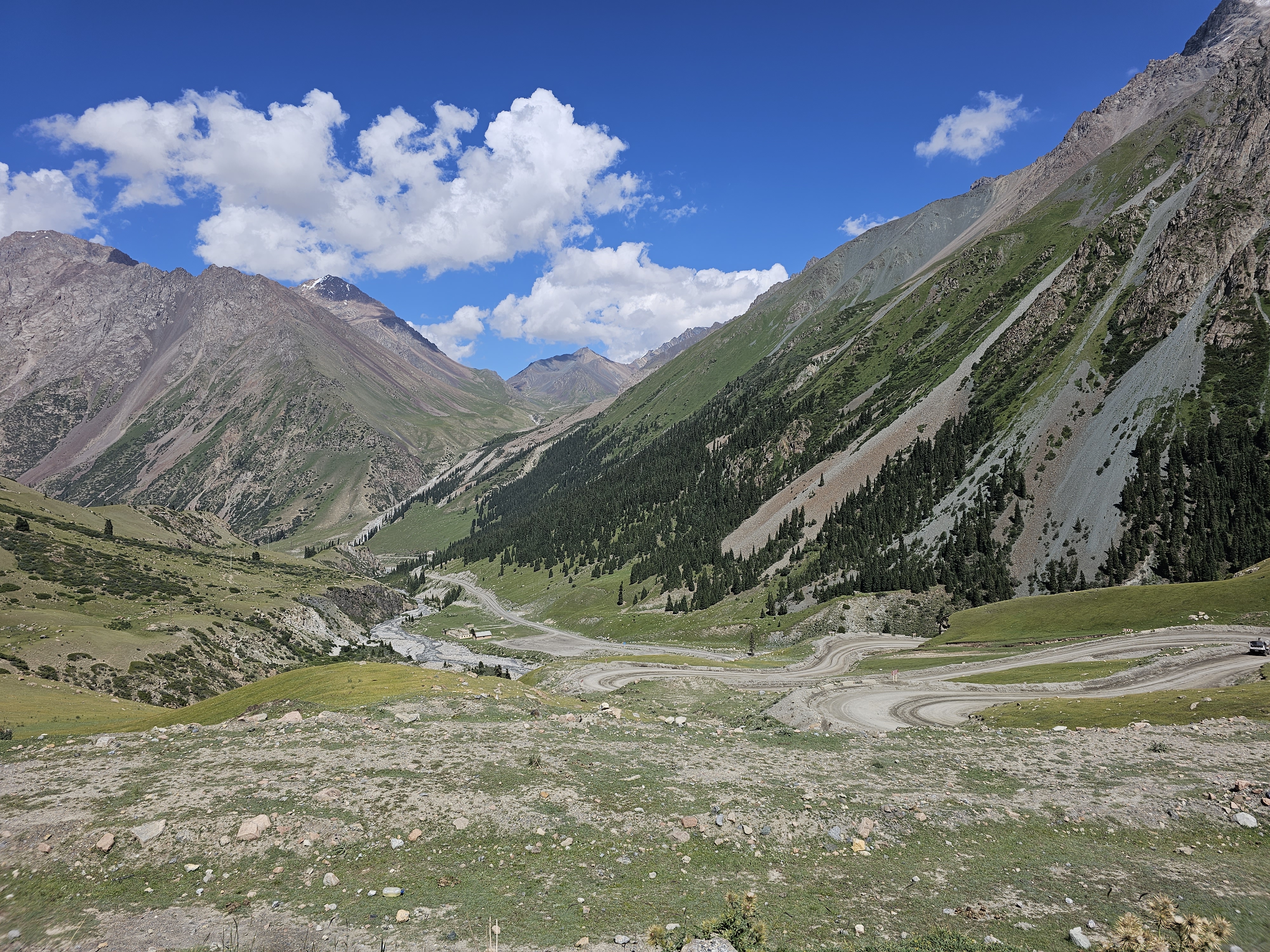
Semenovsky Gorge
Semenovsky Gorge
This is one of the most famous mountain gorges on the northern shore of Lake Issyk-Kul, located on the Kungey Ala-Too range. Semenovsky Gorge is wide and gently sloping and it is here you can find the town where the main events of the World Nomad Games took place. Deep in this gorge there is a small emerald lake called Sutuu-Bulak (Milk Spring), formed as a result of tectonic movements. To get a closer look at the nomadic life of the Kyrgyz people, you can stay overnight in a yurt with a very hospitable host. In the morning, after enjoying a delicious and healthy drink of kumis, you’ll continue your journey, taking in the breathtaking scenery while passing through marvelous subalpine meadows, breathing in pure mountain air and enjoying the beauty of nature.
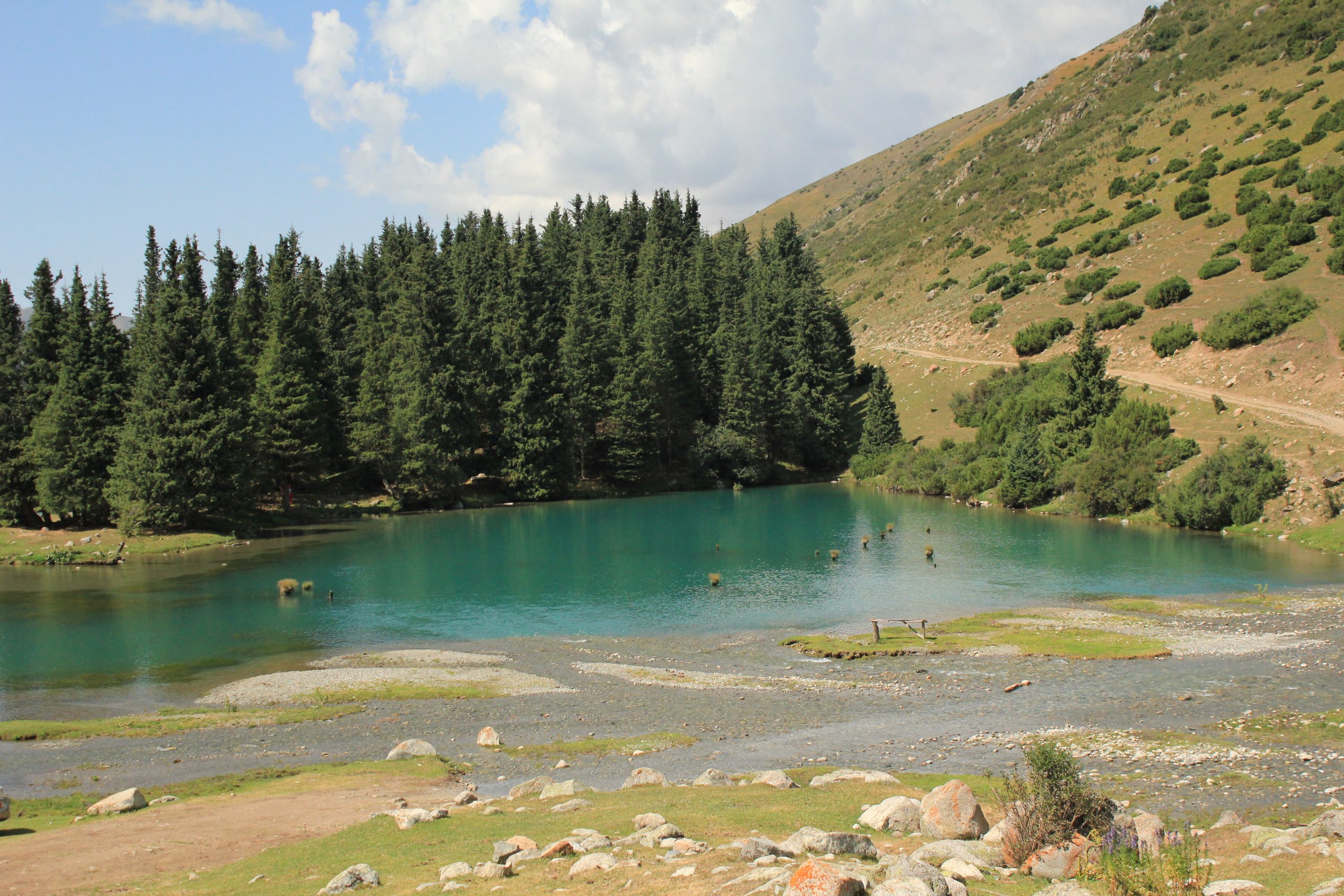
Altyn-Arashan Gorge
Altyn-Arashan Gorge
Altyn-Arashan Gorge is a corner where time seems to stand still and nature reveals its most intimate beauty. Hidden among the Tian Shan mountains, this picturesque spot captivates with its pristine harmony. Its green valleys, immersed in the freshness of coniferous trees, frame rushing rivers and hot springs that are believed to have healing properties. The air is filled with the freshness of the mountains and every breath brings relief and tranquility. Local hot mineral waters and thermal springs gush directly from the earth, creating life-giving streams, while the mist, slowly creeping down the slopes, gently envelops the valley, adding a mystical atmosphere to the entire landscape. Altyn-Arashan is not just a natural place; it is a true paradise for the soul and body. The snow-capped mountains rise majestically against the blue sky, creating a grand picture that overshadows everything around. This is a place where you can forget about time, immerse yourself in silence, enjoy the hot springs, and feel yourself as part of this magical nature.
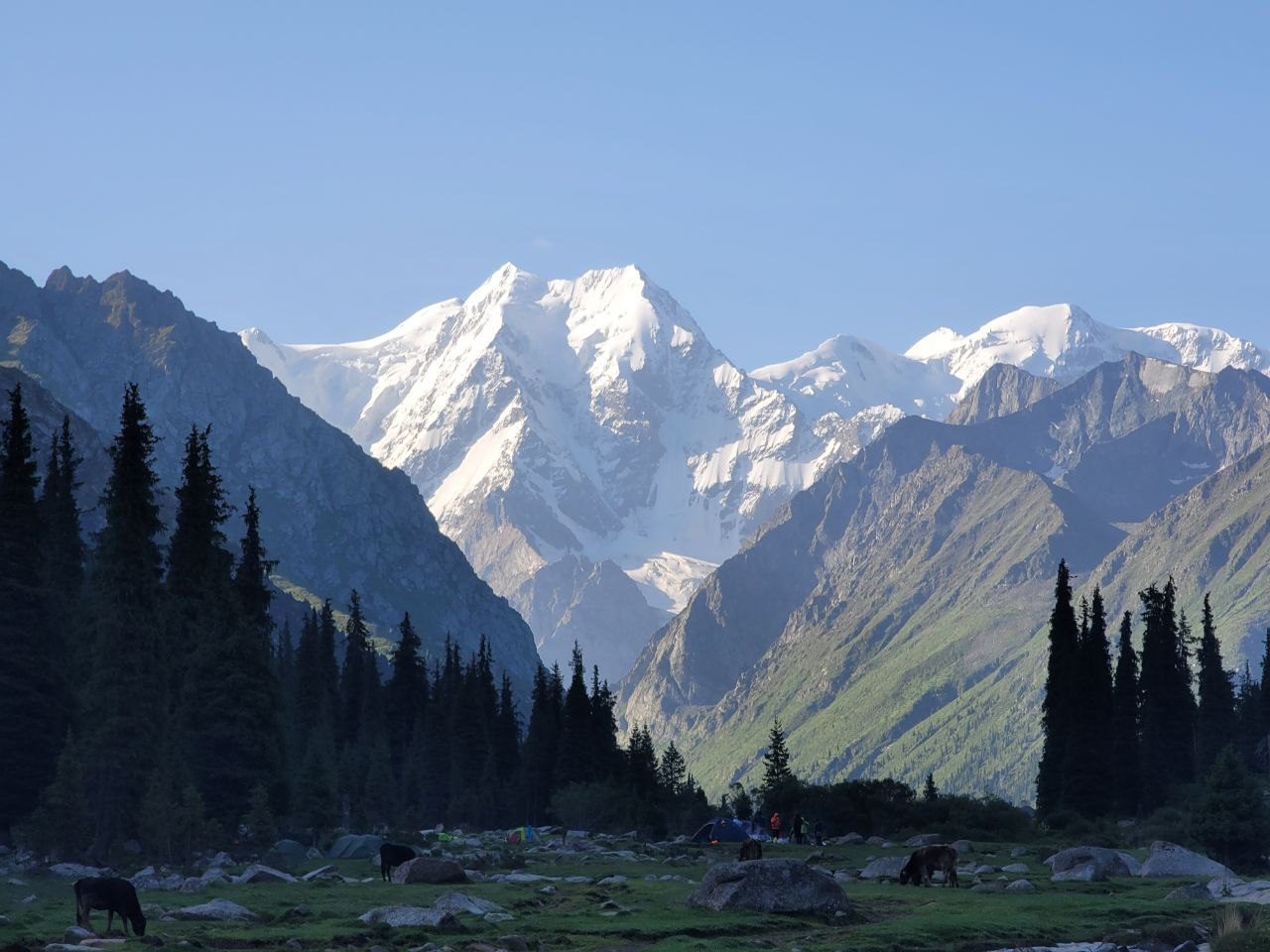
Ala-Archa Gorge
Ala-Archa Gorge
Ala-Archa Gorge is one of the most popular natural attractions, located just 30 kilometers from Bishkek. The gorge is a part of the Ala-Archa National Park, which was established in 1976 and covers an area of more than 17,000 hectares. The park’s name translates as “colorful juniper,” referring to the abundance of juniper trees that grow here. The park is famous for its picturesque landscapes, including pine forests, glaciers, cliffs, and numerous hiking and mountaineering routes. The park is home to various species of wildlife, such as ibex, foxes, wolves, and marmots, making it a great destination for nature enthusiasts. The gorge is well-equipped with necessary infrastructure, including roads, hotels, restaurants, and resting areas, making it convenient for tourists from both Kyrgyzstan and abroad.
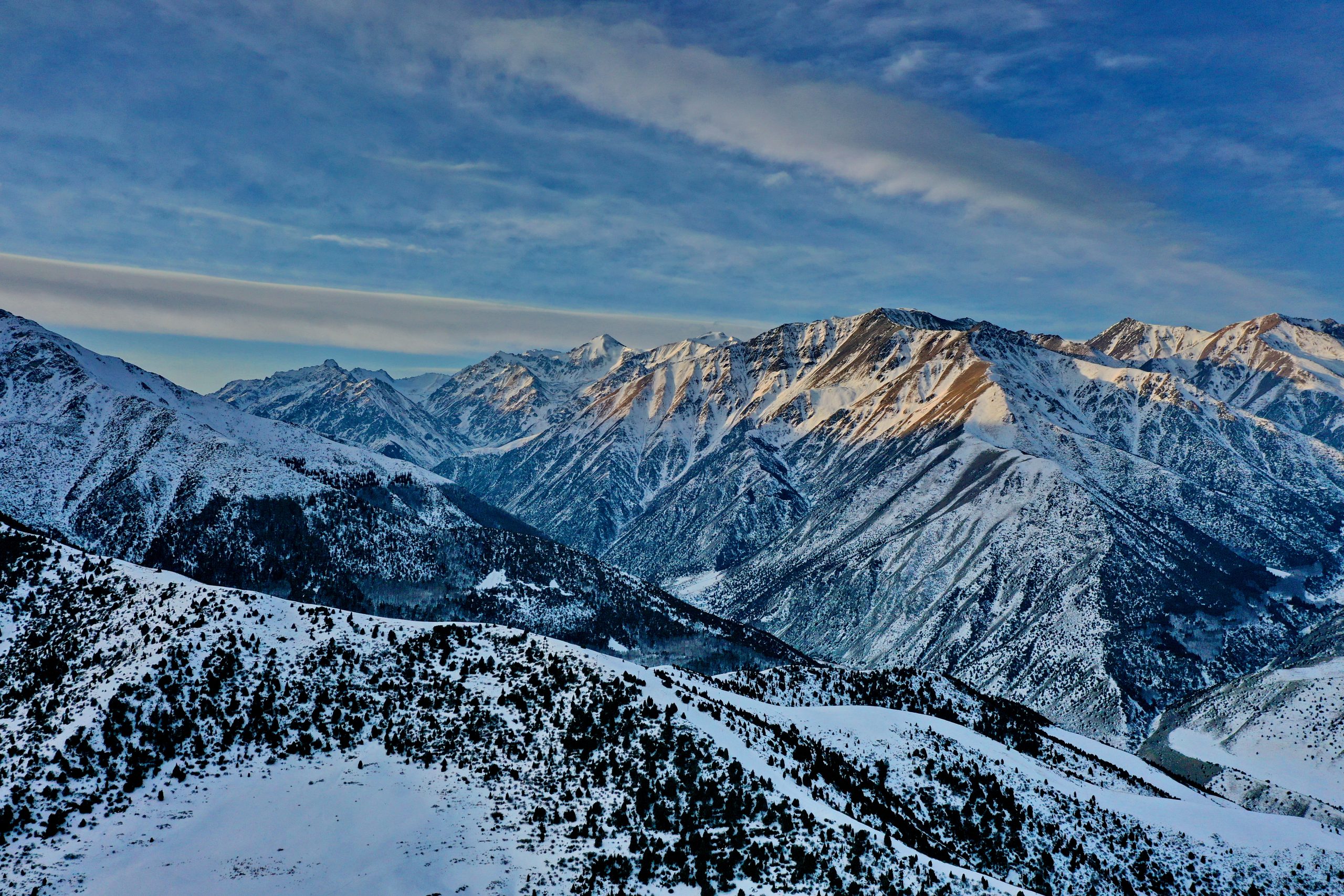
Jeti-Oguz Gorge
Jeti-Oguz Gorge
Jeti-Oguz Gorge is located on the northern slope of the Terskey Ala-Too Range in the Issyk-Kul region of Kyrgyzstan. It is one of the most picturesque places in the country. The gorge stretches for 37 kilometers and is famous for its red sandstone cliffs, such as “Seven Bulls” and “Broken Heart,” which are popular tourist attractions. These rocks got their names due to their shapes because the first one resembles lying bulls, while the second symbolizes a broken heart, according to a local legend.
The gorge is covered with dense vegetation and is home to diverse wildlife, including snow leopards, bears, and eagles. In the surrounding area you can find waterfalls, alpine meadows, and other natural landmarks. The Jeti-Oguz resort, located at an altitude of 2200 meters, is famous for its healing geothermal springs and mineral waters, which are popular among tourists seeking to improve their health.

Chychkan Gorge
Chychkan Gorge
Chychkan Gorge is a picturesque mountain gorge in the southern part of Kyrgyzstan, located within the Jalal-Abad region. It is known for its beautiful natural landscapes, high cliffs, and green forests. The gorge is a popular tourist destination due to its unique natural scenery, clean mountain rivers, and diverse flora and fauna. The mountains and valleys here are frequently used for outdoor activities such as hiking and mountaineering.
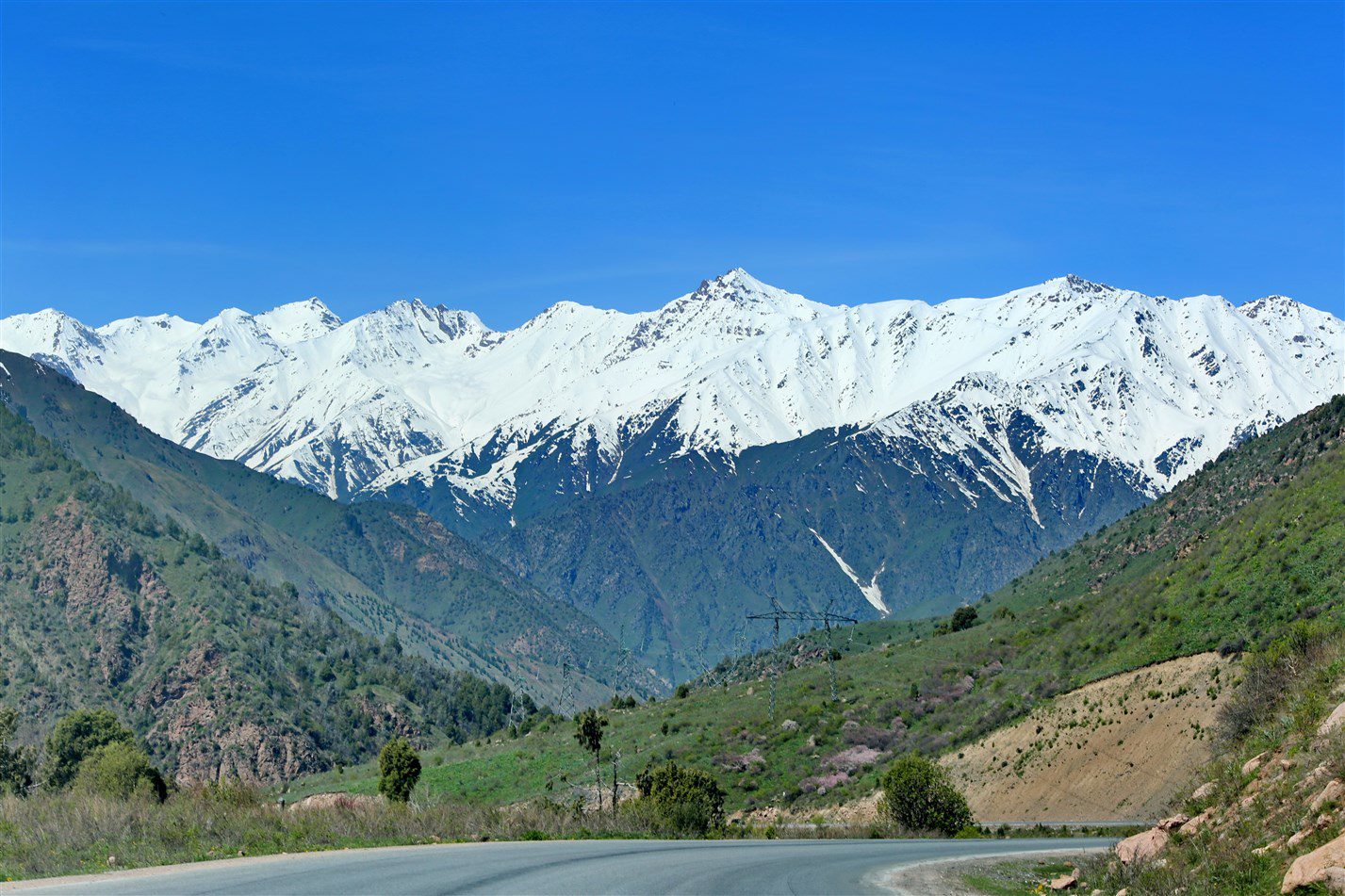
Chunkurchak Gorge
Chunkurchak Gorge
Chunkurchak Gorge is one of the most popular and picturesque places in Kyrgyzstan, located at an altitude of about 2400 meters. It is known for its alpine meadows, coniferous forests, and impressive mountain peaks. In the gorge you can also see the famous Pigeon Waterfall, which is about 35 meters high. You can stroll through the gorge while enjoying views of the mountain peaks, the Supara ethno-complex, and the Chunkurchak ski resort, as well as, walk across a suspension bridge that offers beautiful panoramic views.
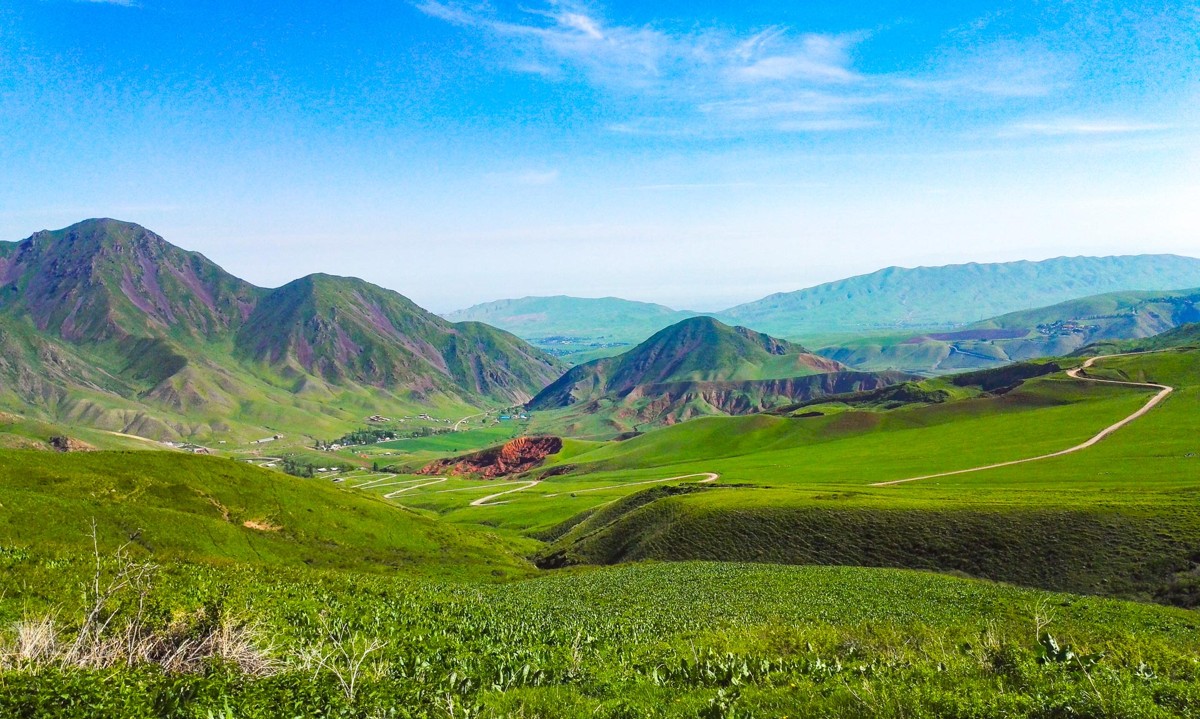
The Konorchok Canyon
The Konorchok Canyon
The Konorchok Canyon with its enchanting landscapes is located 125 km from the capital in the very heart of the Boom Gorge. This place brings to mind the Grand Canyon and western movies that were made there. The only way to reach the canyons is through a maze of rock-like sandstone columns along the dried-up river bed. But when you get there, the captivating views of the canyon make it worthwhile.
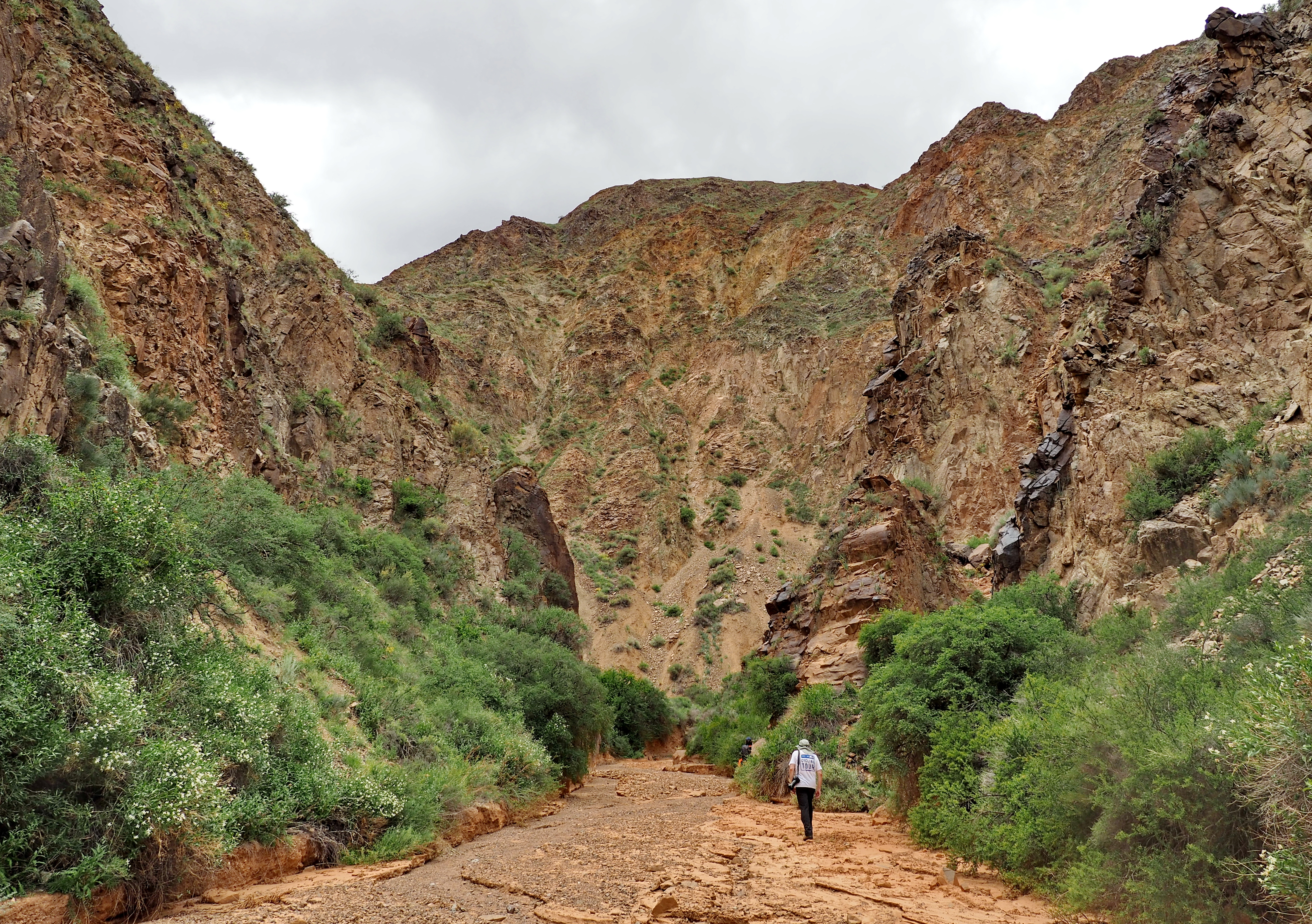
The Fairy Tale Canyon
The Fairy Tale Canyon
The “Fairy Tale” Canyon is located on the southern shore of Issyk-Kul lake. This natural wonder is a beautiful creation of nature that sparks imagination and takes you into a realm of fantasy!
Unique clay sculptures, patterns, and passes have emerged over time, shaped by the forces of wind and water that, subsequently, gave the area its name of “Fairy Tale.” Countless ephedra bushes cover the canyon floor, and the terrain resembles images of mythical creatures and nonexistent cities. The blue stretch of Issyk-Kul lake and snow capped mountains are clearly visible from the heights of the canyon adding to the idyllic views of this area.
The canyon’s relief constantly changes due to natural elements and erosion, creating new shapes and stories on its red clay walls.
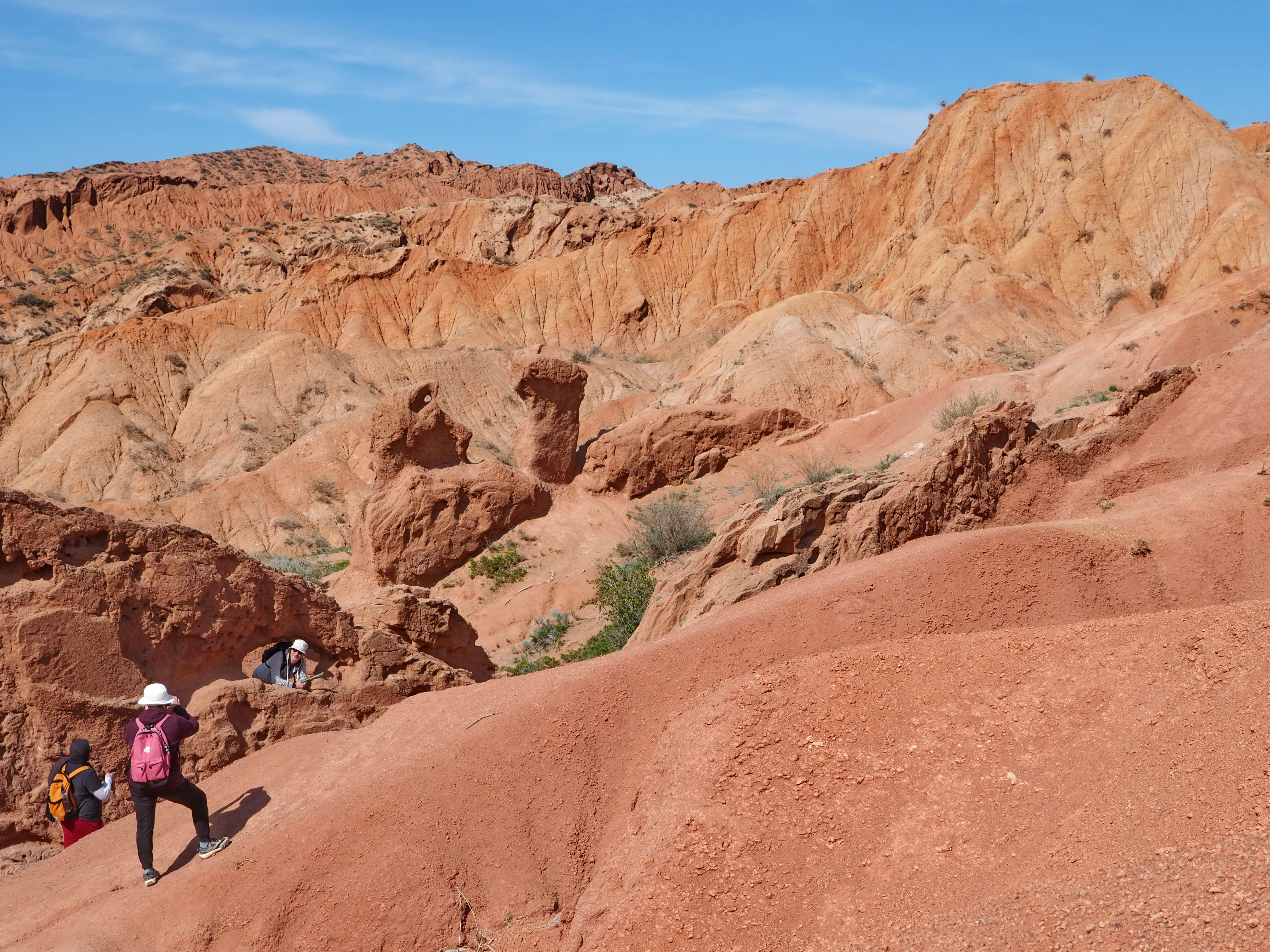
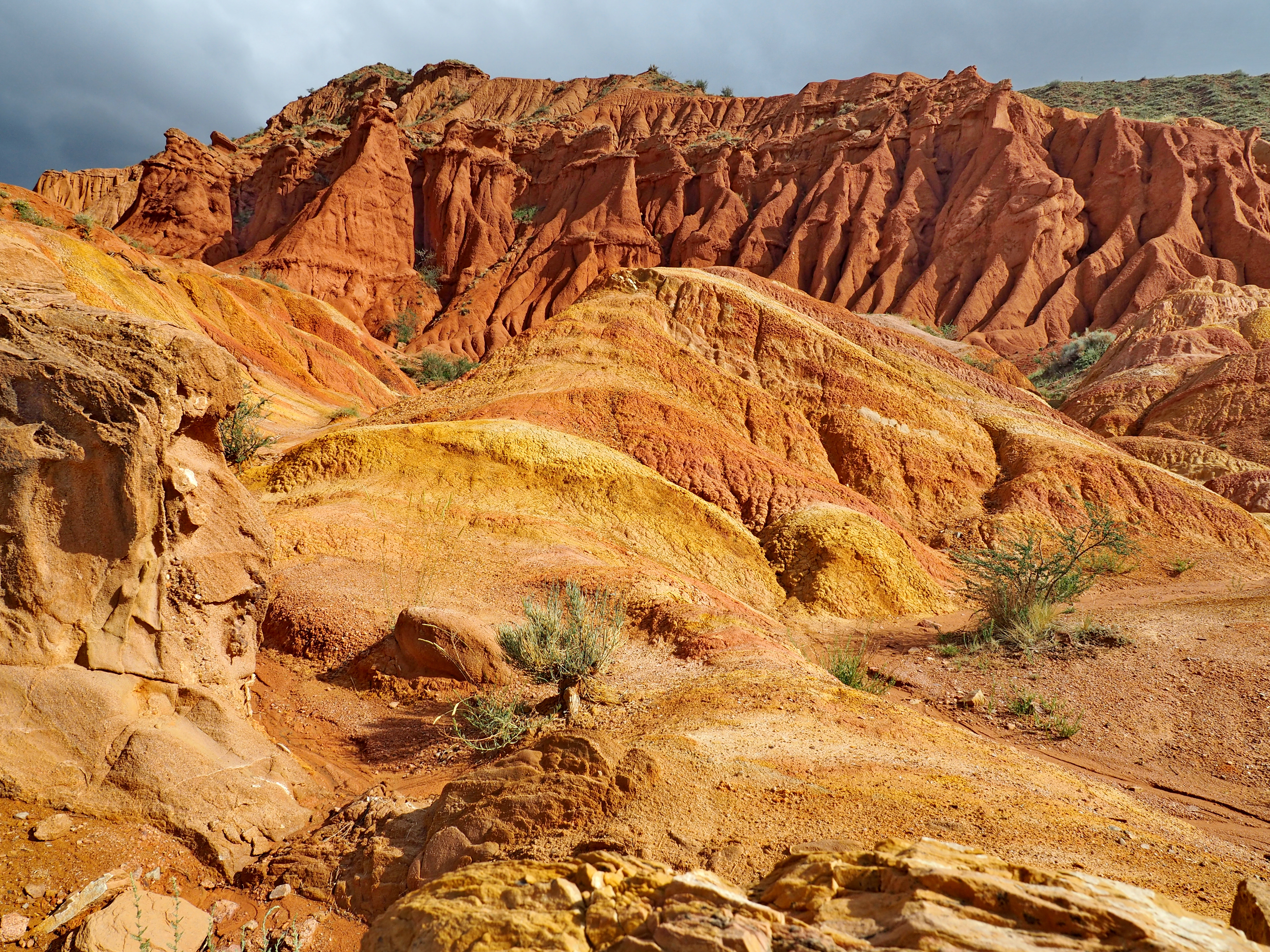
Kulja-Bashy Canyons
Kulja-Bashy Canyons
Kulja-Bashy Canyons: Among the towering mountains, narrow cracks in the rocks create a unique landscape where each turn makes new impressions. The canyon’s cliffs, composed of multicolored rock layers, give this place a special atmosphere. The stones, weathered by time, change their shades depending on the lighting, shifting from warm reds and oranges to cool grays and purples. The canyon’s nature is incredibly diverse: in its lower part, green pastures stretch where animals graze, while in the upper part, rocky cliffs offer breathtaking views of valleys and mountain peaks. A light breeze passing through the canyon fills the air with freshness and coolness. As the sun sets, the canyon is bathed in soft golden light, and its rocks become even more majestic. This place not only amazes with its beauty but also immerses one in an atmosphere of peaceful silence.

The Kok-Moynok Canyons
The Kok-Moynok Canyons
The Kok-Moynok Canyons: This colorful site with its picturesque and unique natural formations is located in the Boom Gorge, approximately 150 km from the capital. The name of the canyons comes from a nearby village of Kok-Moynok.
Red and yellow sandstone was shaped over millennia by the erosion of the rocks. A hike to the foothills of the upper mountains takes you to a place where cosmic views open up.
The features of the canyons are impressive due to water-eroded rock formations that have been shaped over tens or even hundreds of thousands of years, creating beautiful patterns on the cliffs. In the gorge, you can explore a number of canyons with varying lengths, depths, and widths. The base of the canyons is located at 1,500 meters above sea level, while the highest point ranges from 1,650 to 1,700 meters above sea level, creating an elevation difference of 150-200 meters. The iron oxide in the soil gives the canyons their characteristic orange color.
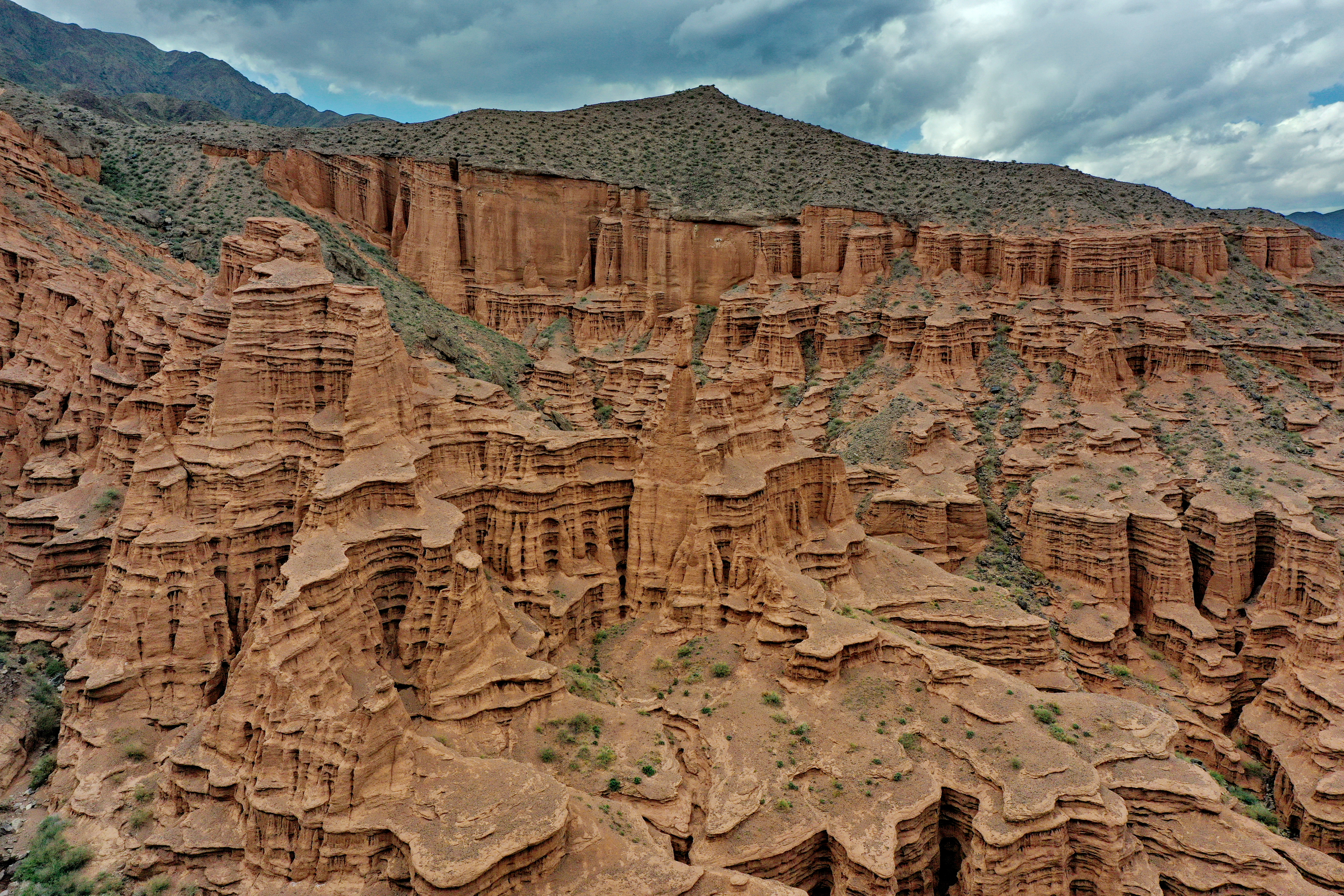
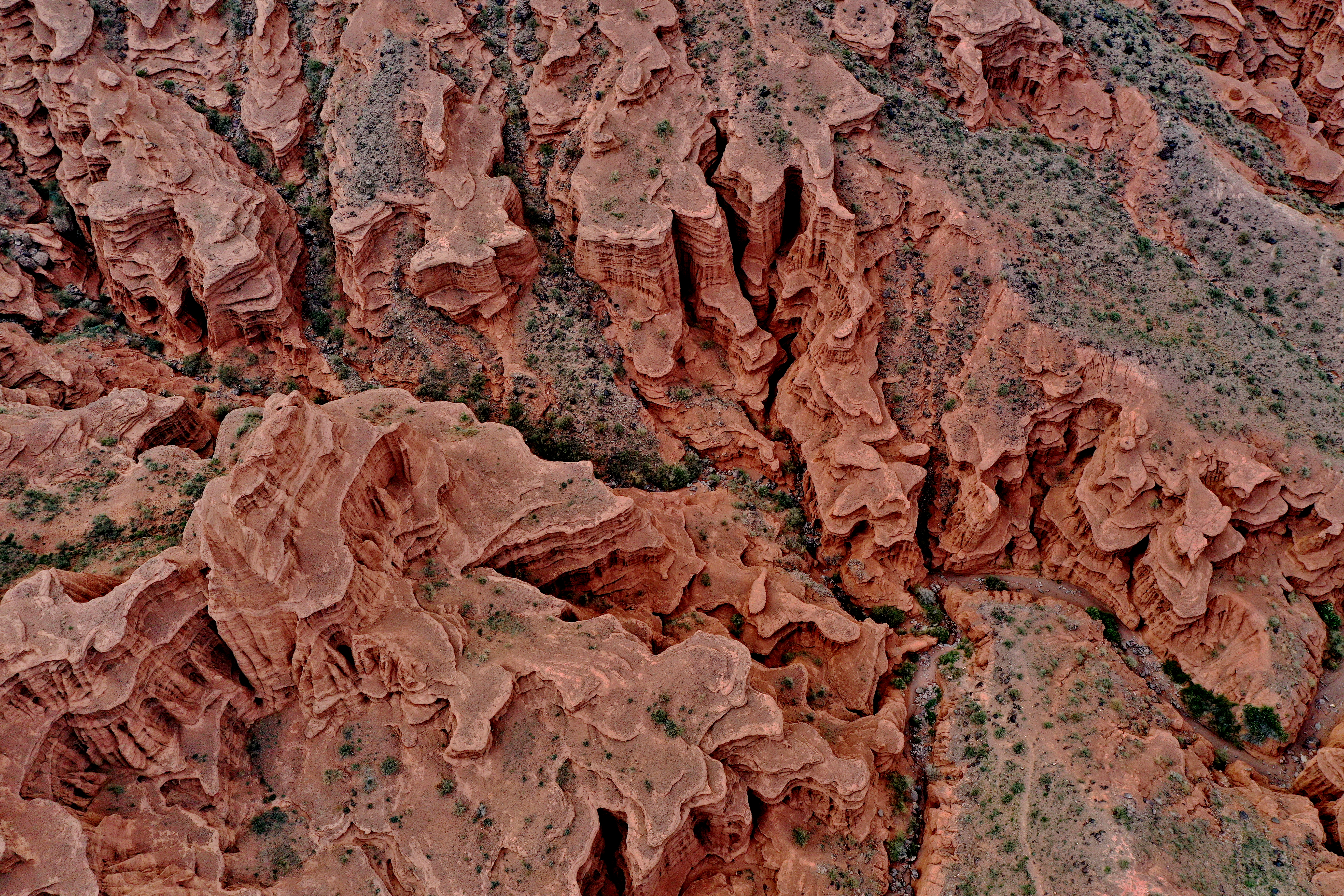
Chon-Ashuu Pass
Chon-Ashuu Pass
Chon-Ashuu Pass is one of the most majestic and breathtaking places in Kyrgyzstan, where nature reveals its full power and beauty. At an altitude of over 3,800 meters above sea level, this mountain pass serves as a link between two worlds – the green valleys and the harsh peaks of the Tien Shan. There is a unique atmosphere amidst the impregnable cliffs and winding serpentine roads here. From the top of the pass an awe-inspiring view of endless mountain expanses opens up. The rugged rocks, covered with patches of snow, contrast with the lush greenery of the alpine meadows, where bright flowers bloom in the summer months and the air is filled with the freshness and fragrance of mountain plants. It feels like here, at the boundary between the sky and the earth, absolute harmony reigns. As the sun rises above the horizon, the mountains begin to take on warm golden hues and everything around is bathed in soft light. The landscape changes with every moment and it becomes clear why this pass is considered one of the most picturesque corners of Kyrgyzstan. Chon-Ashuu Pass is a place where you feel being a part of great nature, where the grandeur of the mountains and the vastness create a sense of infinity and freedom.
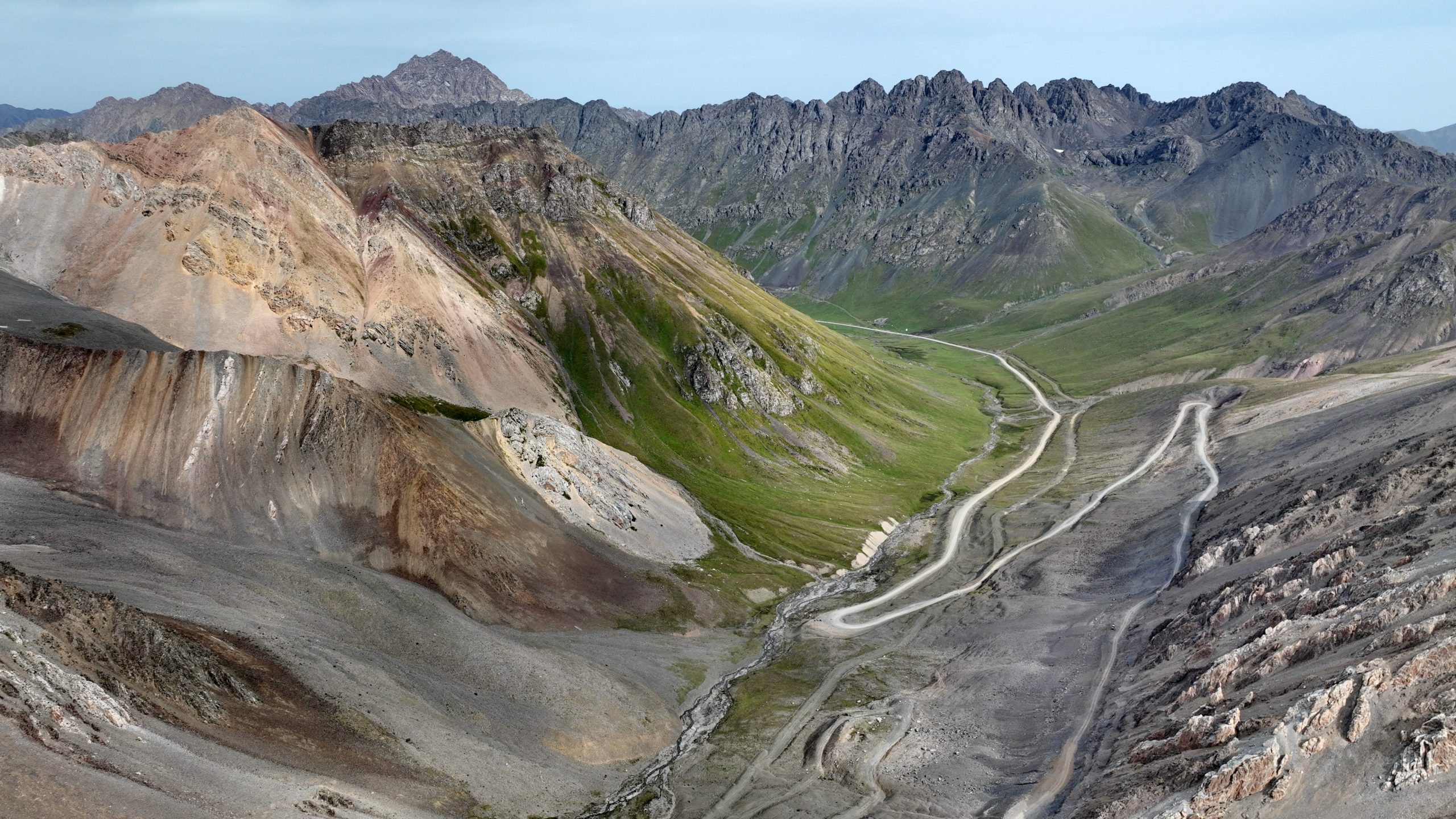
Mels Pass
Mels Pass
Mels Pass is located at an altitude of about 3,800 meters above sea level and connects various valleys that reveal the beauty of the Tian Shan. As you reach the summit, a truly breathtaking view of expansive alpine meadows with vibrant flowers and majestic snow-capped peaks opens up before you. Mountain ridges, draped in green grasses and rocky cliffs, shield this world from the bustle of the outside world, creating an atmosphere of solitude and serenity. Here, you can feel the breath of nature and understand the significance of every moment spent in this unique place. It attracts with its natural beauty and with its history because ancient caravan routes used to pass through the Mels Pass, so locals hold it in great respect. Crossing this pass is not just a journey through the land, but a true path that fills your heart with awe at the power of the mountains and the boundless horizons.

Turuk Pass in Sary-Jaz
Turuk Pass in Sary-Jaz
Turuk Pass in Sary-Jaz is a high-altitude pass, located at around 3,600 meters above sea level. It connects the Sary-Jaz Valley with other regions of the Tien Shan and is rightfully considered as one of the most beautiful and inaccessible routes. Turuk Pass is not just a geographical point, but a true natural arena, where you can feel the full power of the mountain world. The road, winding between rocky cliffs and alpine meadows, reveals incredible views of snow-capped peaks, glaciers, and green valleys scattered with flowers. The peaks, shrouded in mist, seem to guard these highlands and make time to slow down so that nature could fully showcase its pristine beauty. The pass itself is like an archway leading into an unknown world. The slopes of the pass, covered with small rocks and grasses, pose a true challenge for travelers but, at the same time, it offers an opportunity to savor moments of tranquility and the grandeur of nature, which seem to gently remind us how important it is to value each step in this world. Turuk Pass provides not only a physical journey, but also a spiritual one. It awakens admiration and respect for these mountain expanses, where every stone, every crack in the earth, and every gust of wind remind us of the power and mystery of the Tien Shan.
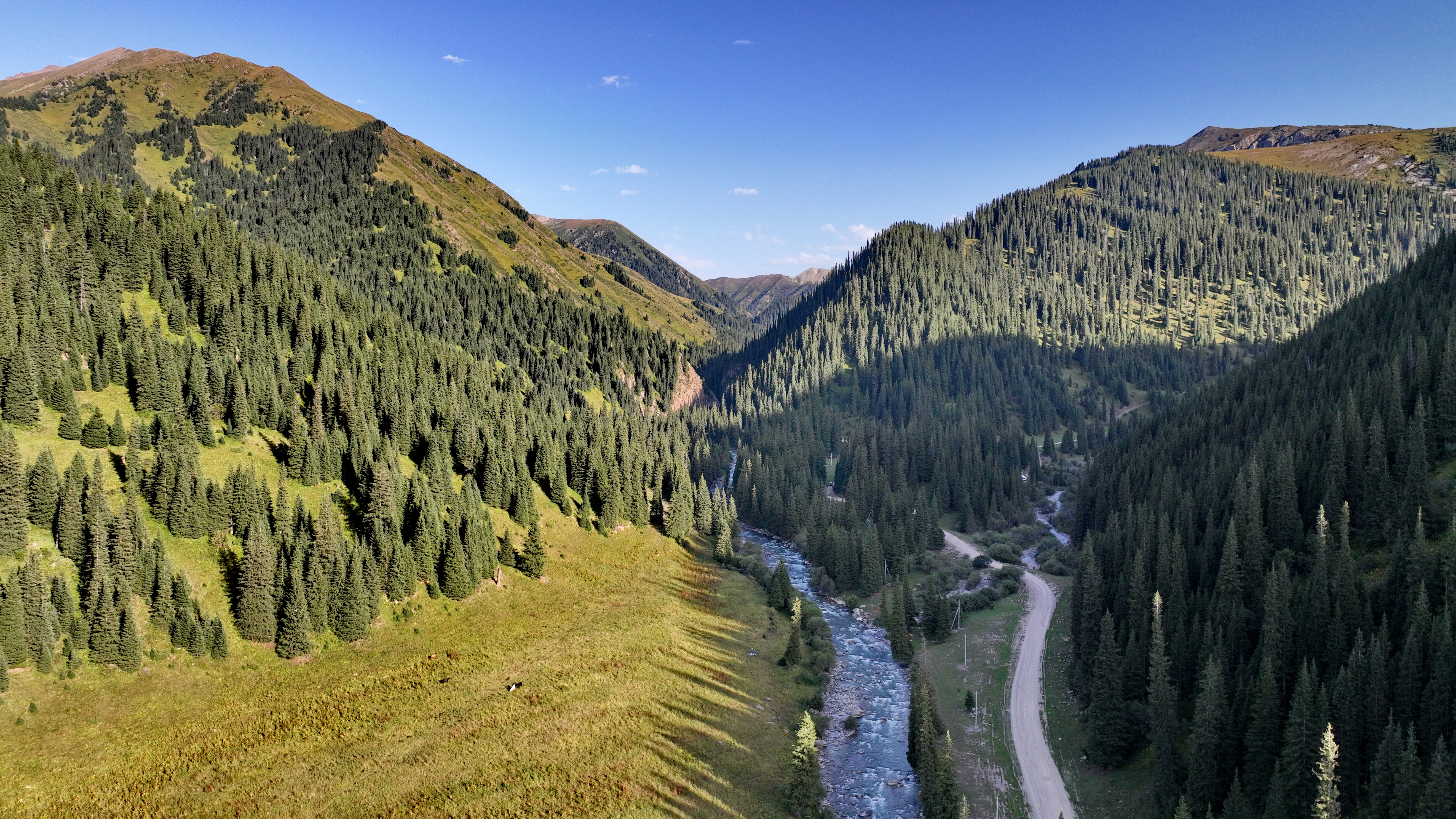
Kalmak Ashuu Pass
Kalmak Ashuu Pass
Kalmak Ashuu Pass is a true treasure of the Tien Shan, where majestic nature meets the spirit of ancient traditions. With an elevation of 3,446 meters, this pass offers breathtaking panoramic views of snow-capped mountain peaks and lush alpine meadows dotted with vibrant flowers. As you ascend the winding paths, you enter a world where time seems to stand still. The pure air fills your lungs and the sounds of nature become the only accompaniment to your journey. Here, among the towering mountains, you can hear the songs of birds and the whisper of mountain streams rushing down the rocky slopes. With every step, you feel the power of nature where the surrounding mountains, like guardians, protect ancient secrets. At this altitude, you are not just traveling — you become part of something greater, immersing yourself in harmony with nature and the spirit of the mountains. Kalmak Ashuu is a place where the soul finds peace, and the heart fills with awe.
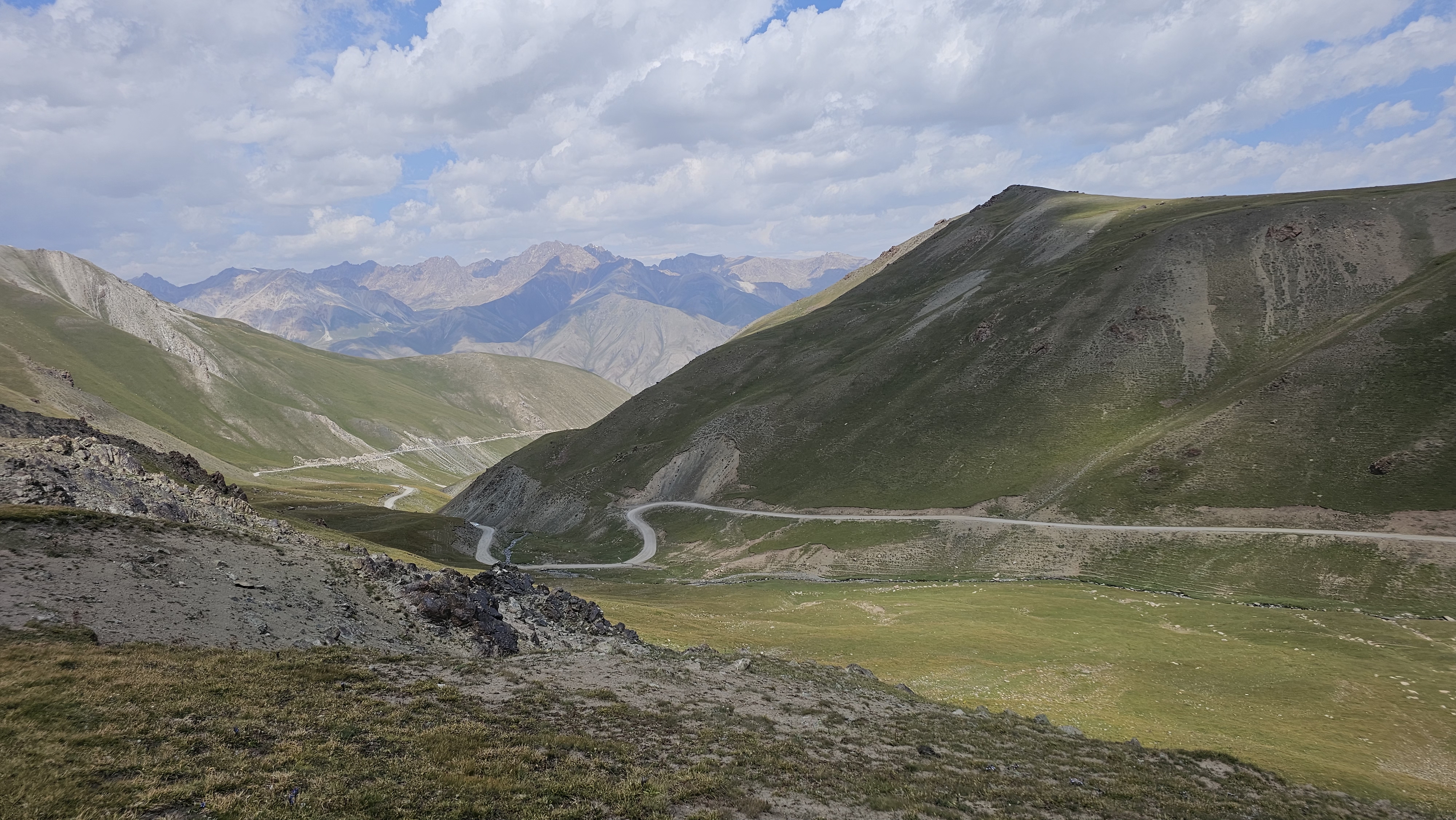
Kara-Goo Pass
Kara-Goo Pass
Kara-Goo Pass is located at an elevation of around 2 800 meters above sea level and connects picturesque valleys with high-altitude landscapes. It offers breathtaking views of the vast expanses and monumental mountain ranges of the Tiаn-Shan that inspire a sense of awe and reverence for nature. As you reach the summit of the pass, a magnificent panorama unfolds before you. The path through the pass is winding and at times requires special attention. However, once you overcome this route, you experience an unparalleled sense of tranquility and unity with nature. The fresh and pure mountain air fills your lungs and the silence around you seems to seep deep into your soul.
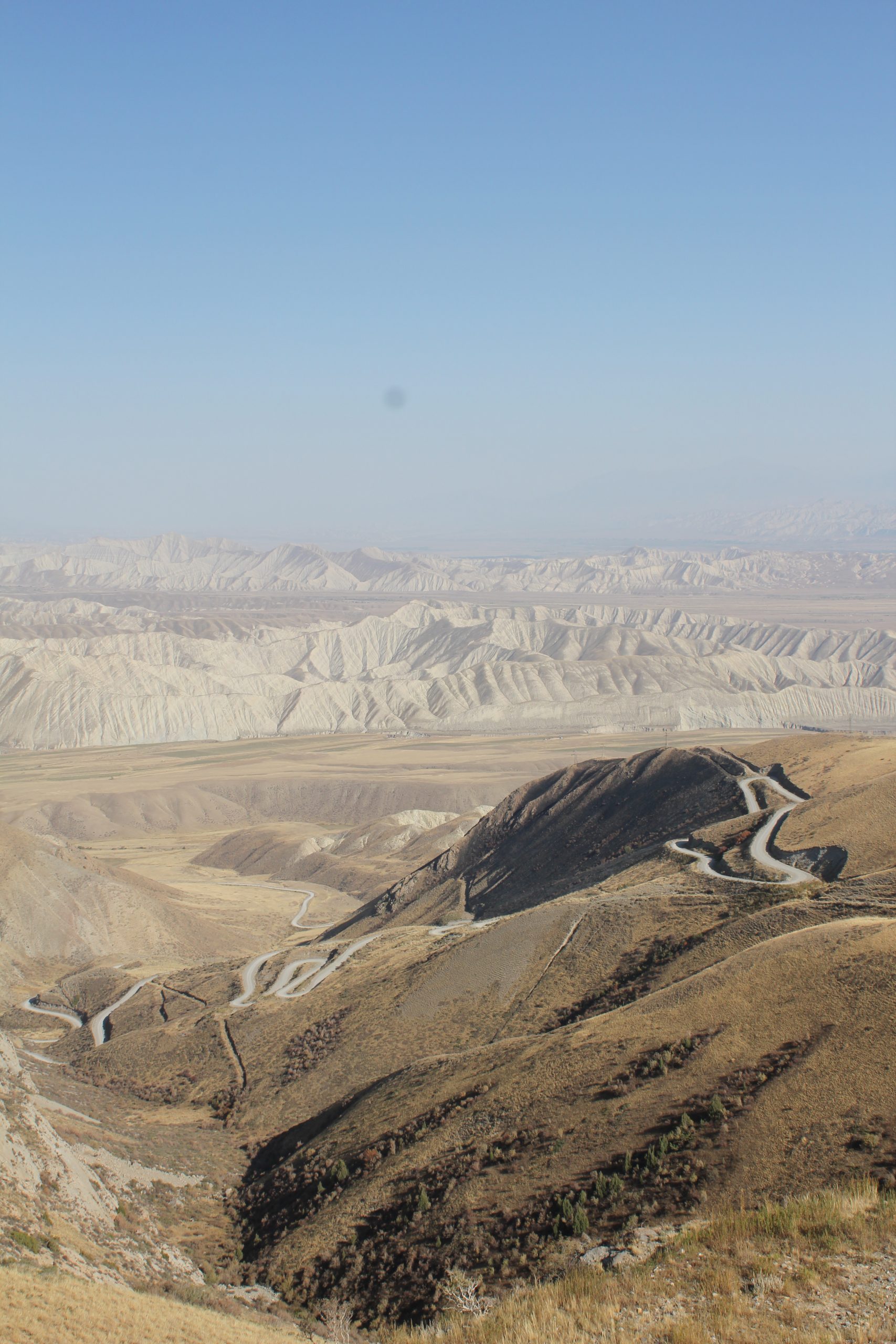
Arslanbob (Arstanbap)
Arslanbob (Arstanbap)
Arslanbob (Arstanbap) is a unique natural site in Kyrgyzstan, famous for its ancient walnut forest, one of the largest in the world. The forest is located on the Chatkal mountain range at an altitude of about 2,000 meters above sea level and covers an area of over 6,000 hectares. Arslanbob attracts tourists with its natural beauty, waterfalls, and the opportunity to see rare species of flora and fauna. It is also an important cultural and historical site for the local residents.
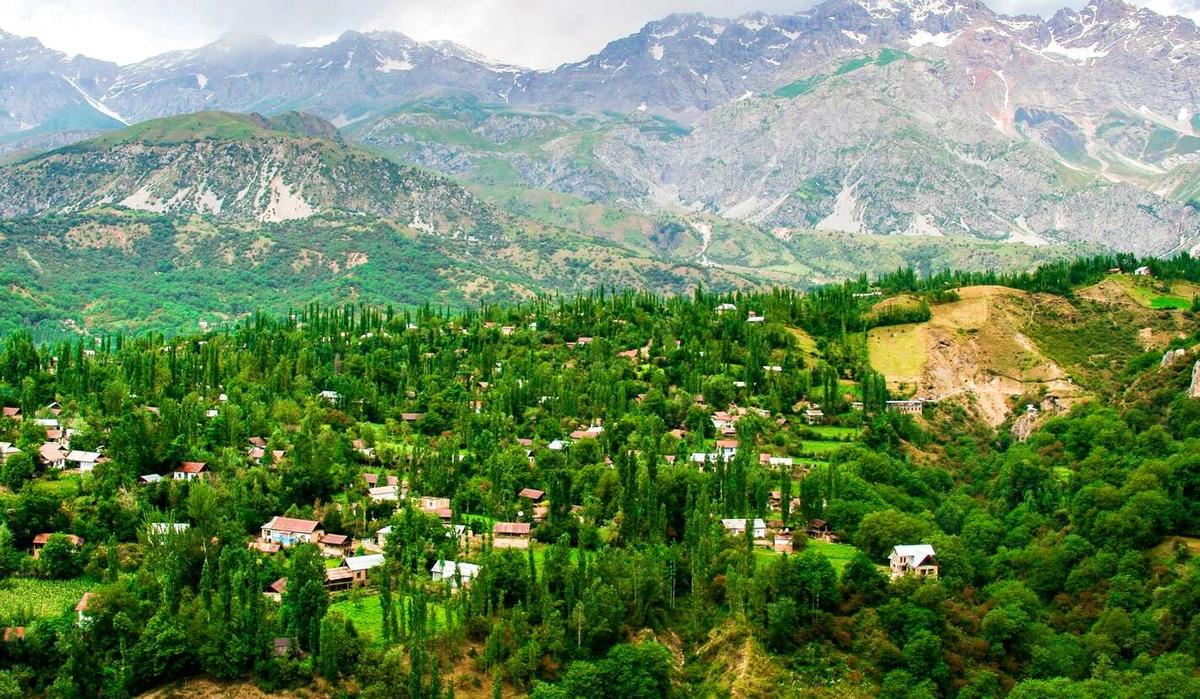
The Arstanbap Waterfalls
The Arstanbap Waterfalls, also known as Arslanbob, are located near the village of Arstanbap in the Jalal-Abad region of Kyrgyzstan and include two waterfalls – the Big and the Small.
The Big Arstanbap Waterfall has a height of about 80 meters and a narrow shape, which makes it appear even taller. Its name, which translates from Kyrgyz as a “lion’s mouth,” comes from the sound of the falling water, which resembles a lion’s roar. It is impossible to get close to the waterfall as it falls into a deep chasm. The Big Arstanbap Waterfall can only be reached on foot or on a horseback, and the journey takes about two hours.
The Small Arstanbap Waterfall is about 30 meters high and is surrounded by trees, creating a picturesque atmosphere. This waterfall is easily accessible by narrow trails leading from the village. At the foot of the waterfall grows a tree where people often tie ribbons while making wishes. The area around the waterfall is often crowded with visitors, so it’s better to arrive early in the morning.
There is a cave called Kyrk Cherten near the waterfall where mystical powers live, according to a legend. Also there are the largest in the world relict walnut-fruit forests in the region, more than a thousand years old. Every year they produce a bountiful harvest of walnuts and fruit.
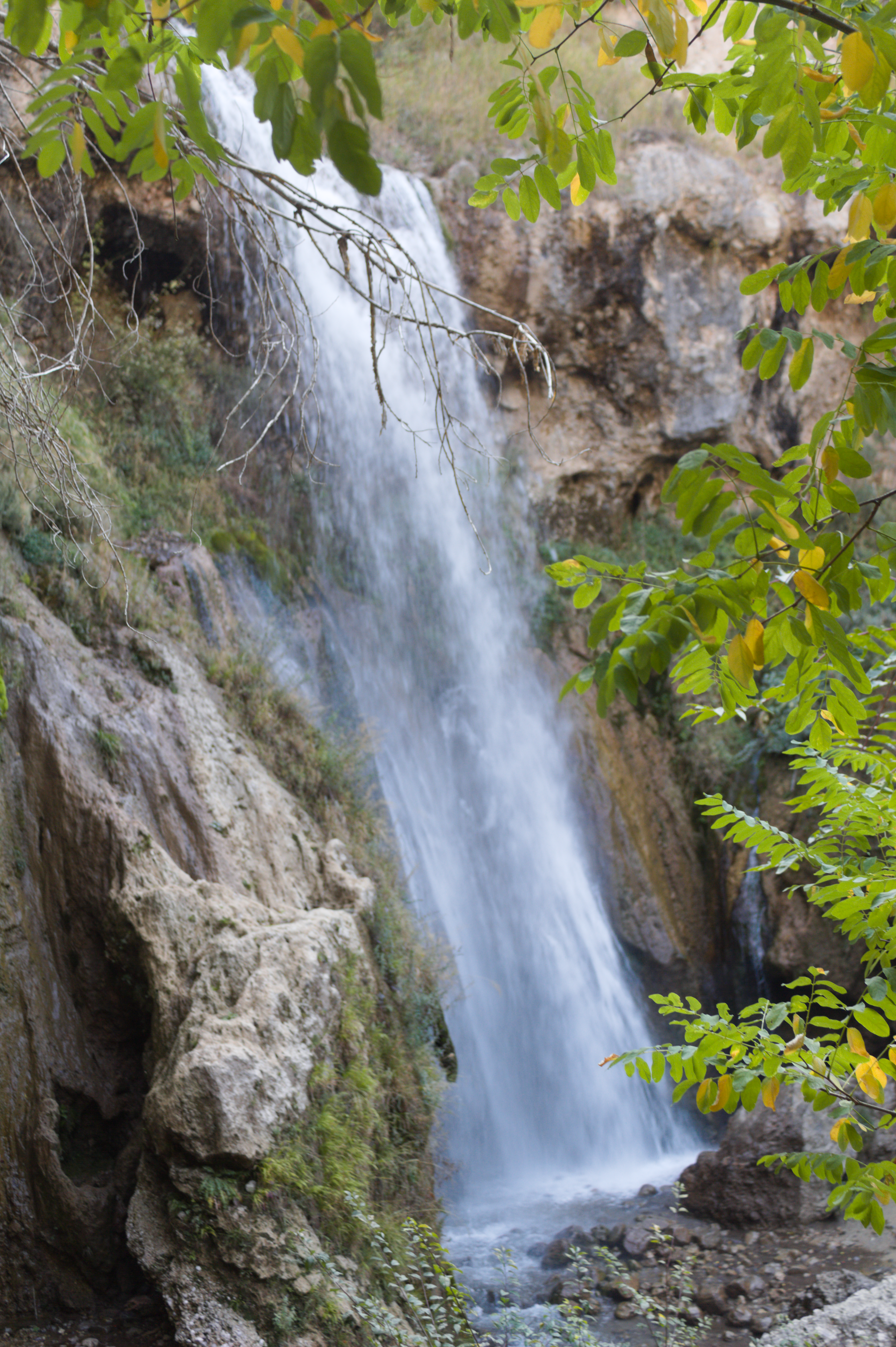
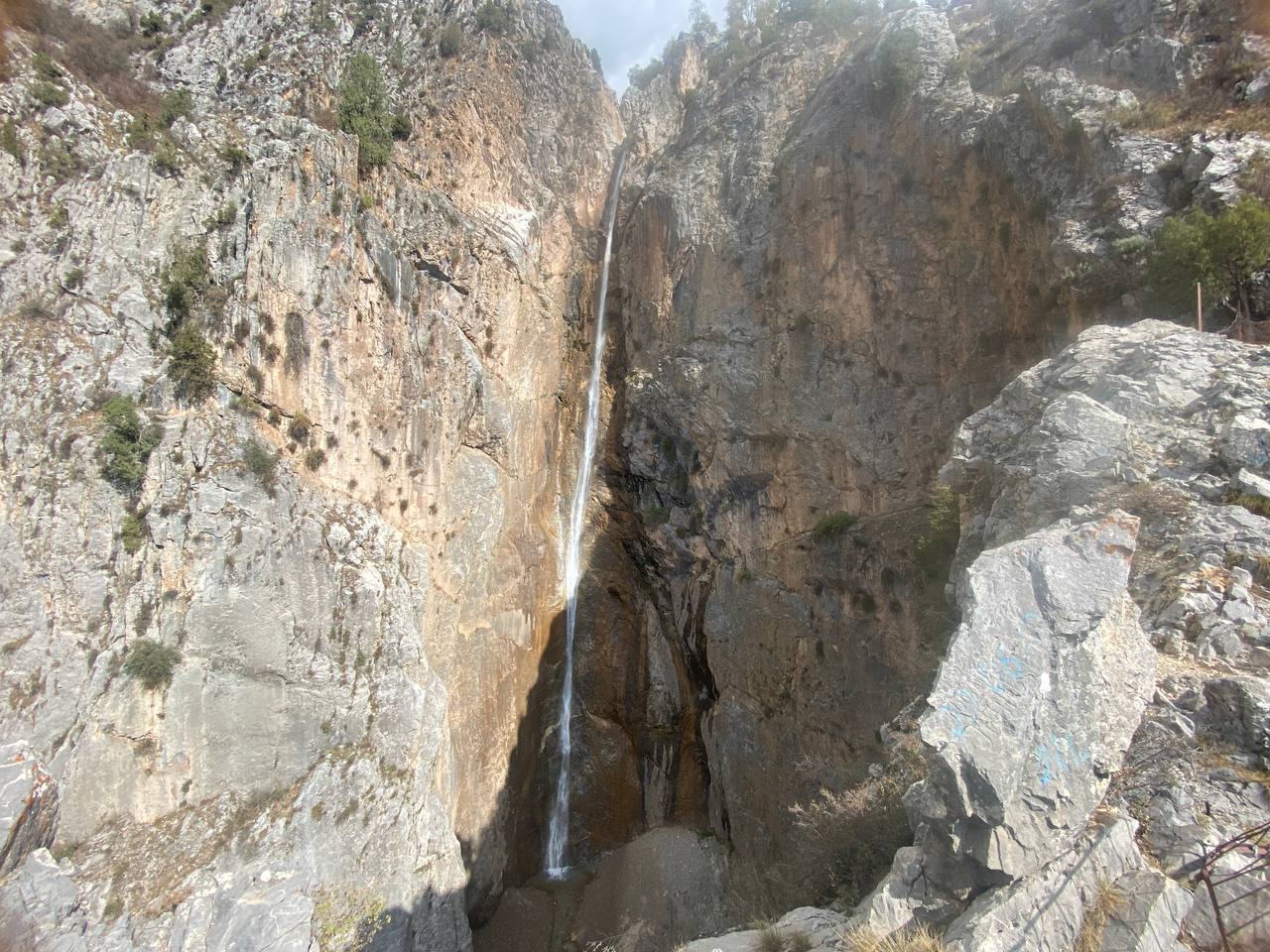
Sulaiman-Too
Sulaiman-Too
Sulaiman-Too translates from Kyrgyz as “Mount Solomon.” This mountain range, towering above the city of Osh, is one of the most majestic natural landmarks of the region. It is also a sacred place where history, religion, and nature harmoniously combine and, thus, has become a symbol of spiritual and cultural heritage not only for the locals but also for visitors. The slopes of the mountain are covered in greenery and the summit offers a breathtaking view of the city of Osh and the surrounding valleys. Here, one can not only admire the stunning views but also explore ancient ruins, old mosques and caves where, according to legend, the prophet Solomon prayed. This place has a mystical atmosphere, where nature and human history intertwine into a whole. During the ascent to Sulaiman-Too, one can enjoy the silence, disrupted only by a soft rustle of the wind and footsteps on the rocky paths. Amidst the ancient stones and sacred monuments, there is a unique energy that attracts people from all over the world. The climb to the mountain requires some physical effort, but it also provides an opportunity for deep contemplation, enjoying the endless horizon where heaven and earth meet. Sulaiman-Too is not just a mountain, it is a living monument of culture that inspires, soothes, and helps find harmony between humanity and nature.
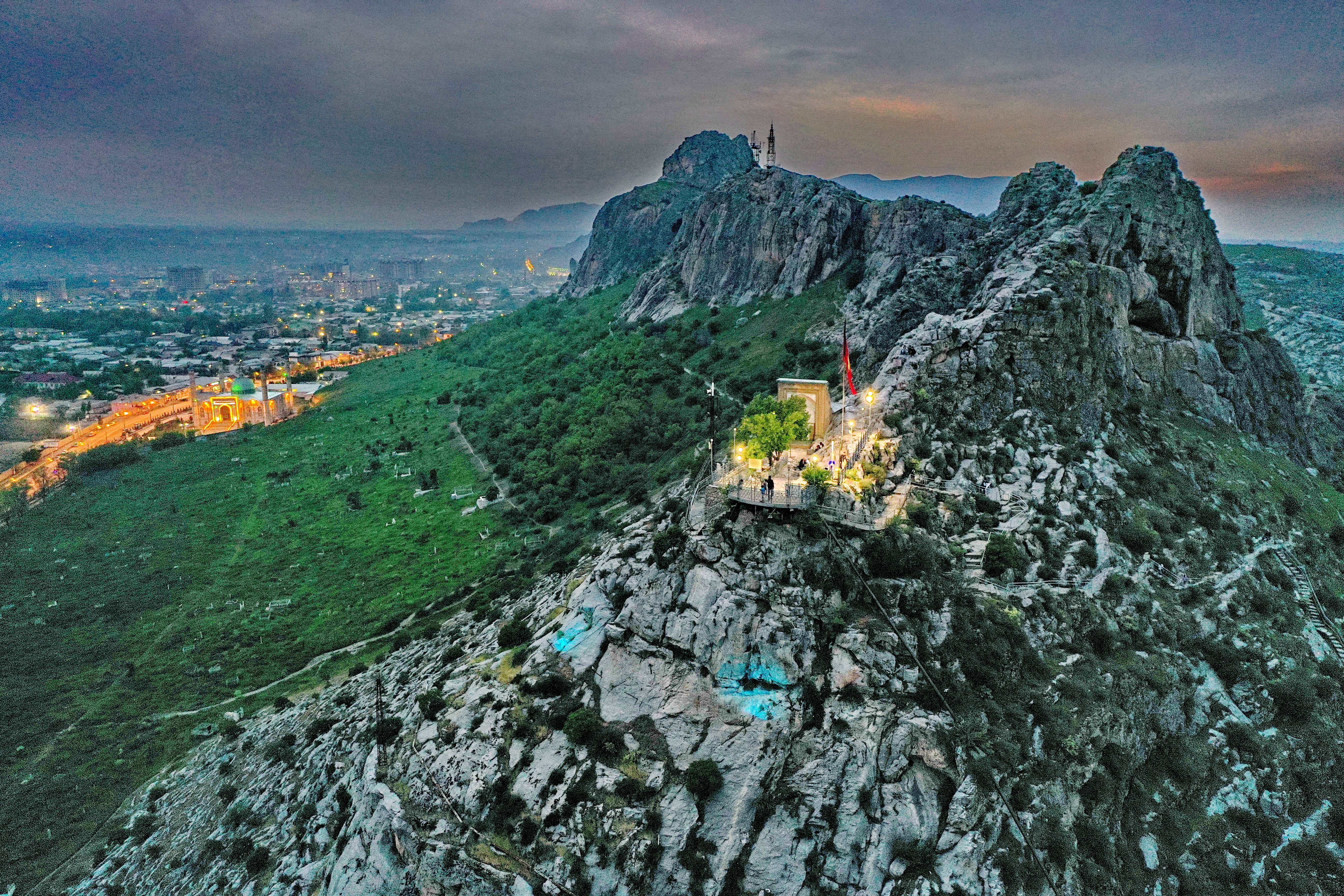
The Naryn River
The Naryn River
The Naryn River is the largest and one of the most significant rivers in Kyrgyzstan. It flows through the Issyk-Kul, Naryn, and Jalal-Abad regions, starting from the confluence of two rivers – the Big and Small Naryn. The source of the Big Naryn is the Kum-Tor River, fed by the Petrov Glacier. The Naryn is primarily supplied by glacial waters, but it is also replenished by underground waters and rainfall.
The river is 535 kilometers long, and in some places it reaches a width of 40 meters. The Naryn plays an important role in irrigating fields and provides electricity to most of the country, thanks to several hydroelectric power stations, including the Toktogul, Tash-Kumyr, and Kurpsay HPPs.
The landscapes along the river are diverse, ranging from rocky shores and mountain gorges to valleys where some rare and endangered species of flora and fauna, such as juniper, golden eagles, and snow leopards can be found. The Naryn River is also a popular destination for extreme tourism, especially rafting, thanks to its turbulent rapids and crystal-clear waters.

The Burana Tower
The Burana Tower
The Burana Tower, located in the Chuy Valley, is a majestic monument of antiquity, a symbol of resilience and wisdom from the past. Tall and slender, it seems to gaze into the future, piercing the sky with its elegant silhouette. The tower was built over a thousand years ago and was a part of the ancient city of Balasagun, one of the largest centers of culture and trade of its time. The stone walls of the tower, covered in traces of time, tell the story of the past when Burana was an important hub on the Great Silk Road. The grandeur and simplicity of the structure are captivating, and it feels as if history itself lives in these stones, imbued with light and wind. Standing at the base of the tower, one can feel how time slows down and everything around becomes part of one great story. From the top of the tower an incredible view opens up where green expanses of the valley are surrounded by mountains in a ring, and shades of blue and gold play in the sky at different times of the day. This place brings peace to the soul and reflections on time and eternity. The Burana Tower is not just an architectural monument, but also is a symbol of Kyrgyzstan’s historic depth that connects the past and present in its silent grandeur.

The Tash-Rabat Caravanserai
The Tash-Rabat Caravanserai
The Tash-Rabat Caravanserai is one of the major archaeological attractions in Kyrgyzstan and, as a unique architectural monument from the early Middle Ages, it is a symbol of the mountain landscape of the Tengir-Too.
Tash-Rabat is located in the picturesque Kara-Koyun Gorge at an altitude of 3,200 meters above sea level, 110 km south from the city of Naryn and not far from the Kyrgyz-Chinese border.
For centuries this place served as a shelter for numerous caravans traveling from China. This well-preserved cultural and historical monument is one of the most important remnants of the Great Silk Road.
From the outside, Tash-Rabat appears to look quite rugged, monumental, and impregnable; nevertheless, it continues to attract the attention of many tourists. If you are a history enthusiast or interested in archaeology, this place is definitely for you! In addition, from here through a mountain pass lies a route to the high altitude lake Chatyr-Kul with its breathtakingly beautiful scenery.
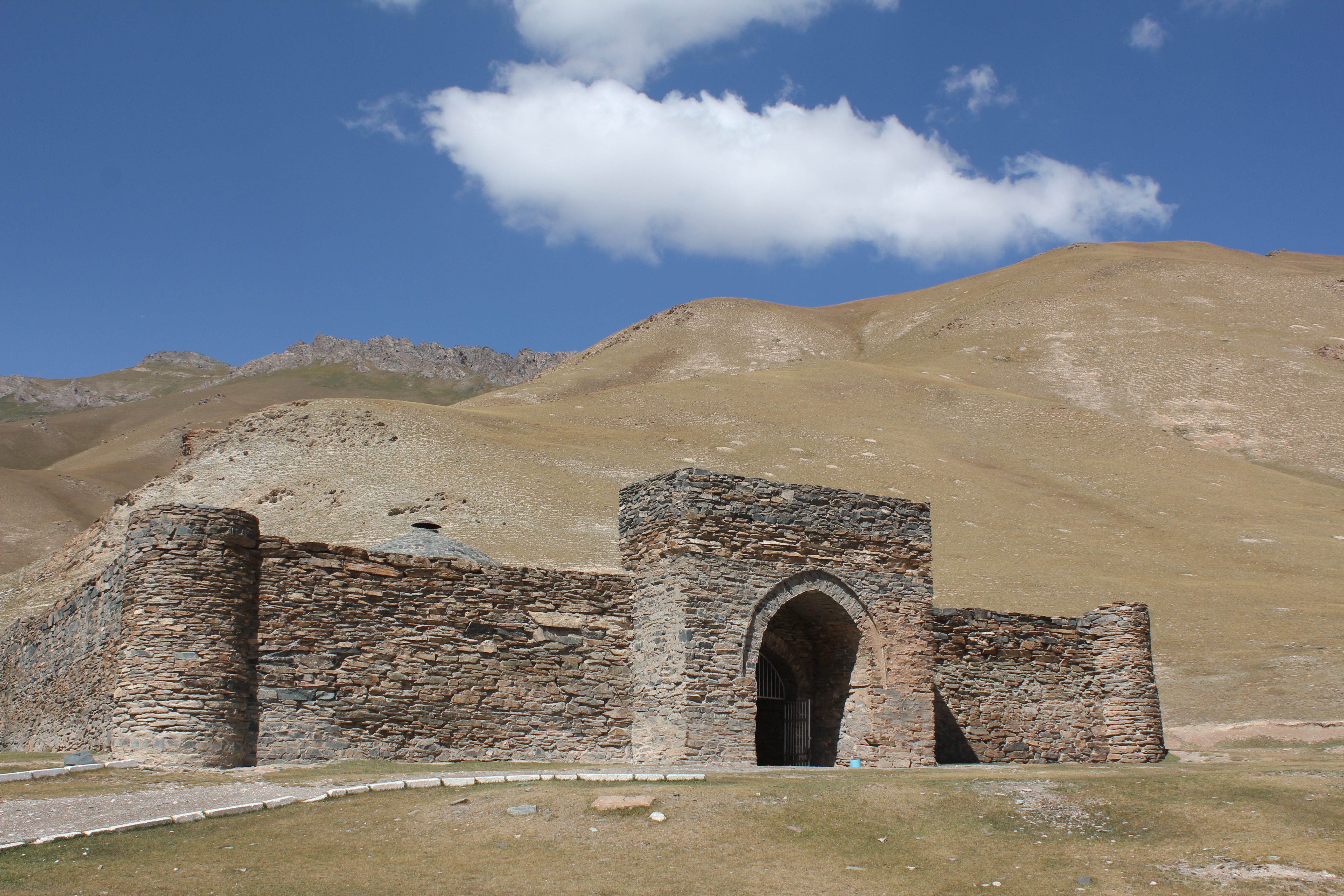
Toktogul Reservoir
Toktogul Reservoir
Toktogul Reservoir is one of the largest reservoirs in Central Asia, located on the Naryn River. It was created in the 1970s for irrigation, electricity generation, and flow regulation. The reservoir plays an important role in the energy supply of the region, as the Toktogul Hydroelectric Power Station operates based on its water levels.
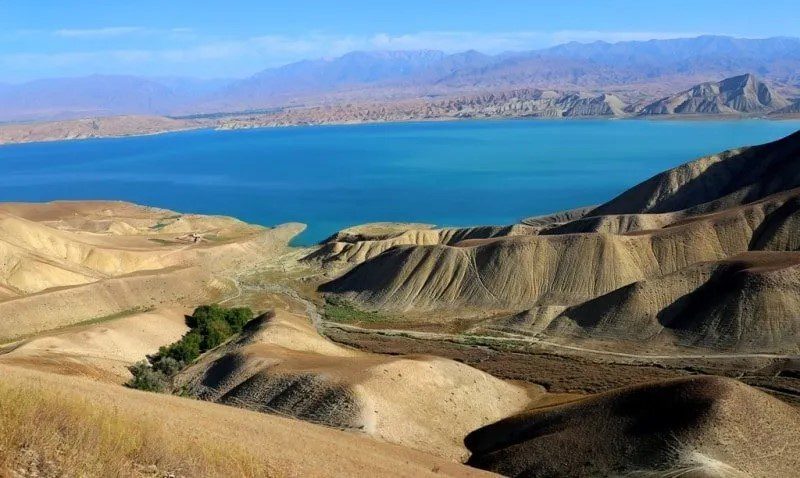
The rock carvings of "Saymaliu Tash"
The rock carvings of "Saymaliu Tash"
The rock carvings of “Saymaliu Tash” are located in Kyrgyzstan, in the Saymaliu-Tash gorge of the Jalal-Abad region. This is one of the largest archaeological complexes in Central Asia, where rock images from the Bronze Age have been discovered. The drawings depict animals such as goats, deer, horses, as well as hunting scenes and ritual elements.
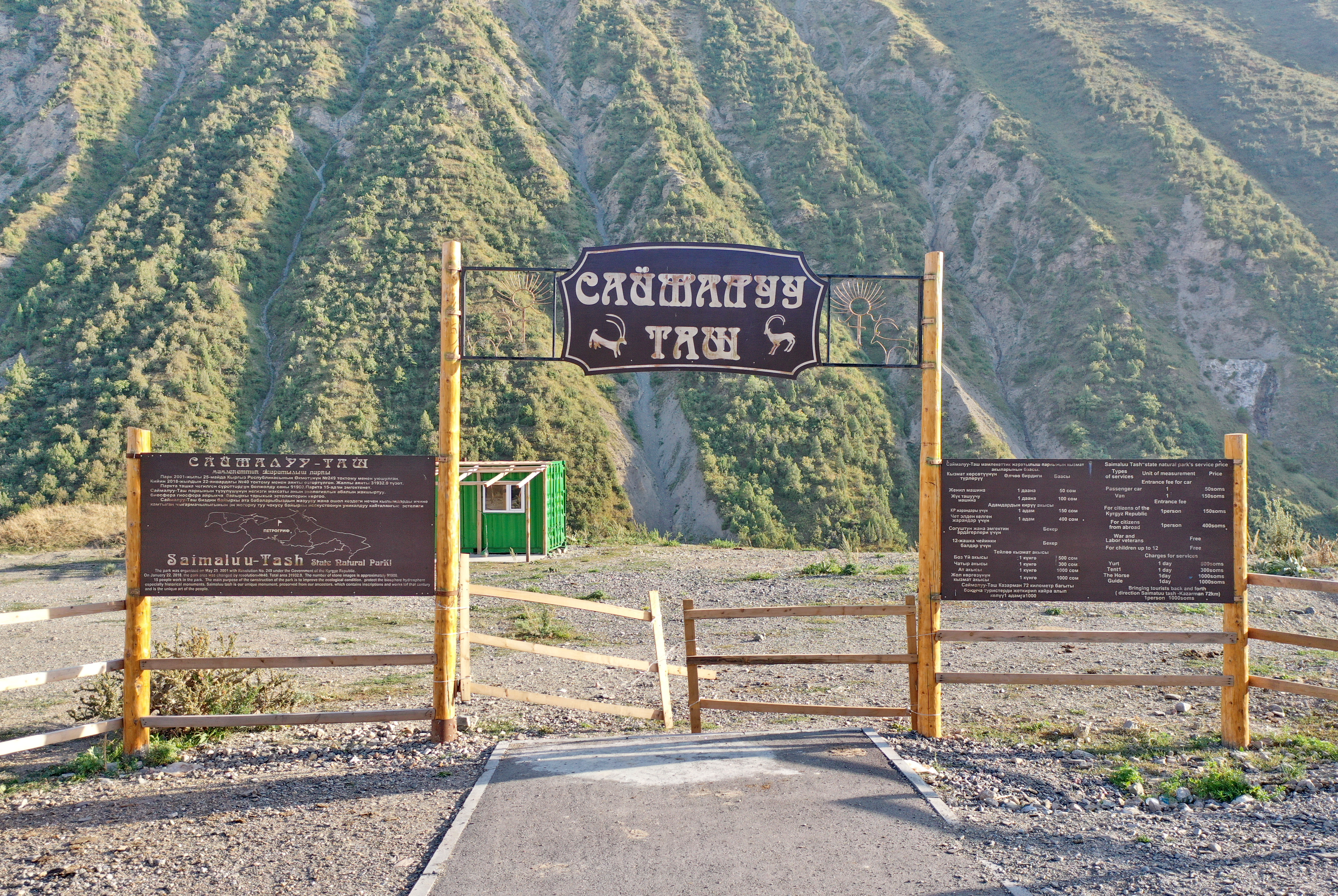
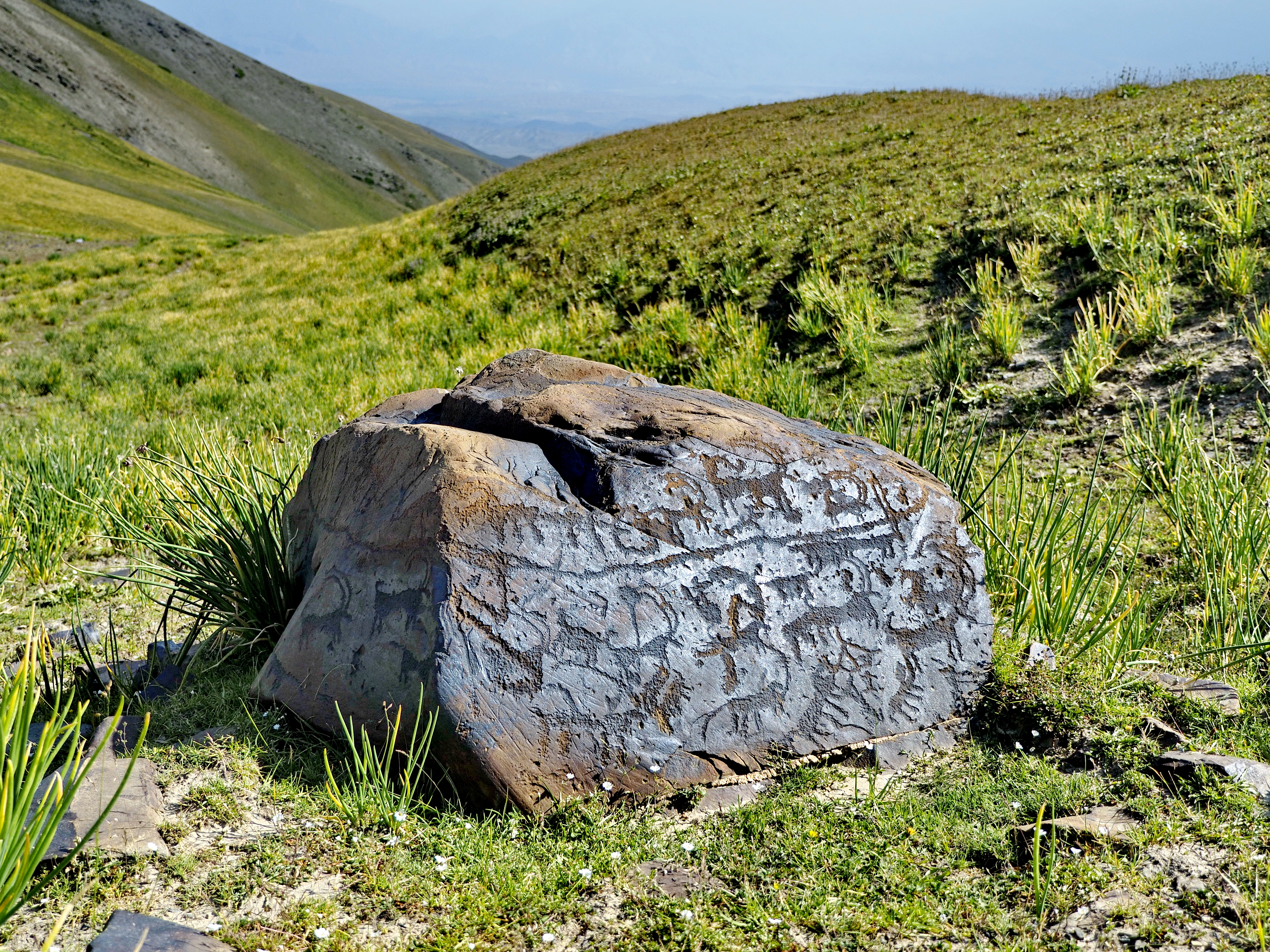
San-Tash (Counted Stones)
San-Tash (Counted Stones)
San-Tash (Counted Stones) There are many unique sites in the Issyk Kul region of Kyrgyzstan that keep attracting not only regular tourists, but also historians who are eager to uncover the mysteries of the past. One such captivating site is the burial mound complex of San-Tash, located to the southwest of the San Tash Pass. Most likely, almost everyone heard the legend of how the great Amir Timur, when setting out on a military campaign, ordered his soldiers to throw a stone into one pile. This way he could estimate the size of his army. On the return journey the soldiers took a stone from the pile, but many stones remained, allowing Timur to calculate how many soldiers were left on the battlefield. However, according to scholars, this is not just a pile of stones but a unique burial mound complex dating back to an earlier period, from the 6th to the 1st centuries BC, when the Saks and Usun tribes dominated this area.

The "Rukh Ordo" Cultural Center named after Ch. Aitmatov
The "Rukh Ordo" Cultural Center named after Ch. Aitmatov
The “Rukh Ordo” Cultural Center named after Ch. Aitmatov is an open-air museum located on the shores of Lake Issyk-Kul in the city of Cholpon-Ata.
The museum complex consists of ten mini-museums, that include the Ch. Aitmatov Museum, the Hall of Kyrgyz Art and Culture, painting and photo galleries, the Treasury of Knowledge Museum, as well as, five chapels, each representing one of the major world religions: Islam, Catholicism, Orthodoxy, Buddhism, and Judaism, symbolizing that God is one for all.
Additionally, the complex features exhibits of fascinating sculptures and paintings.
